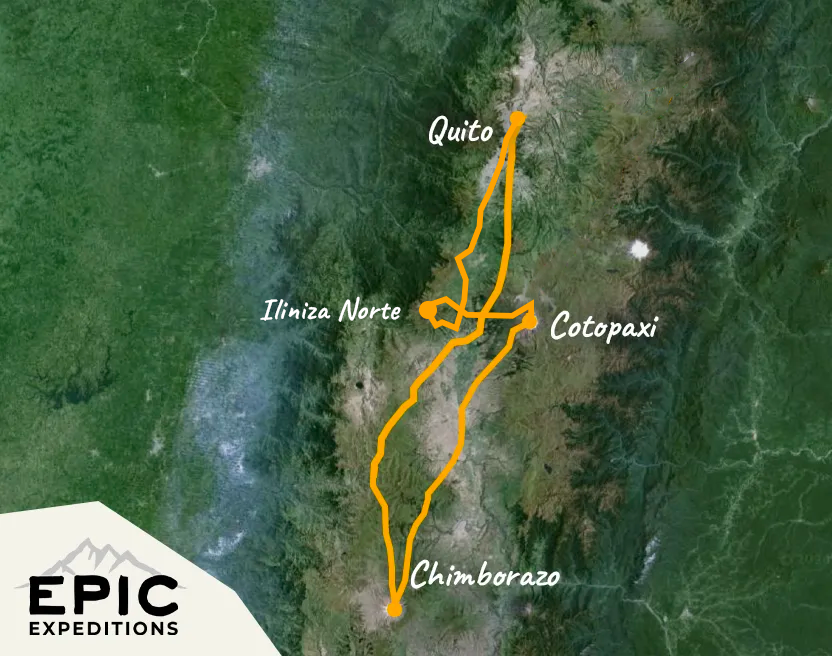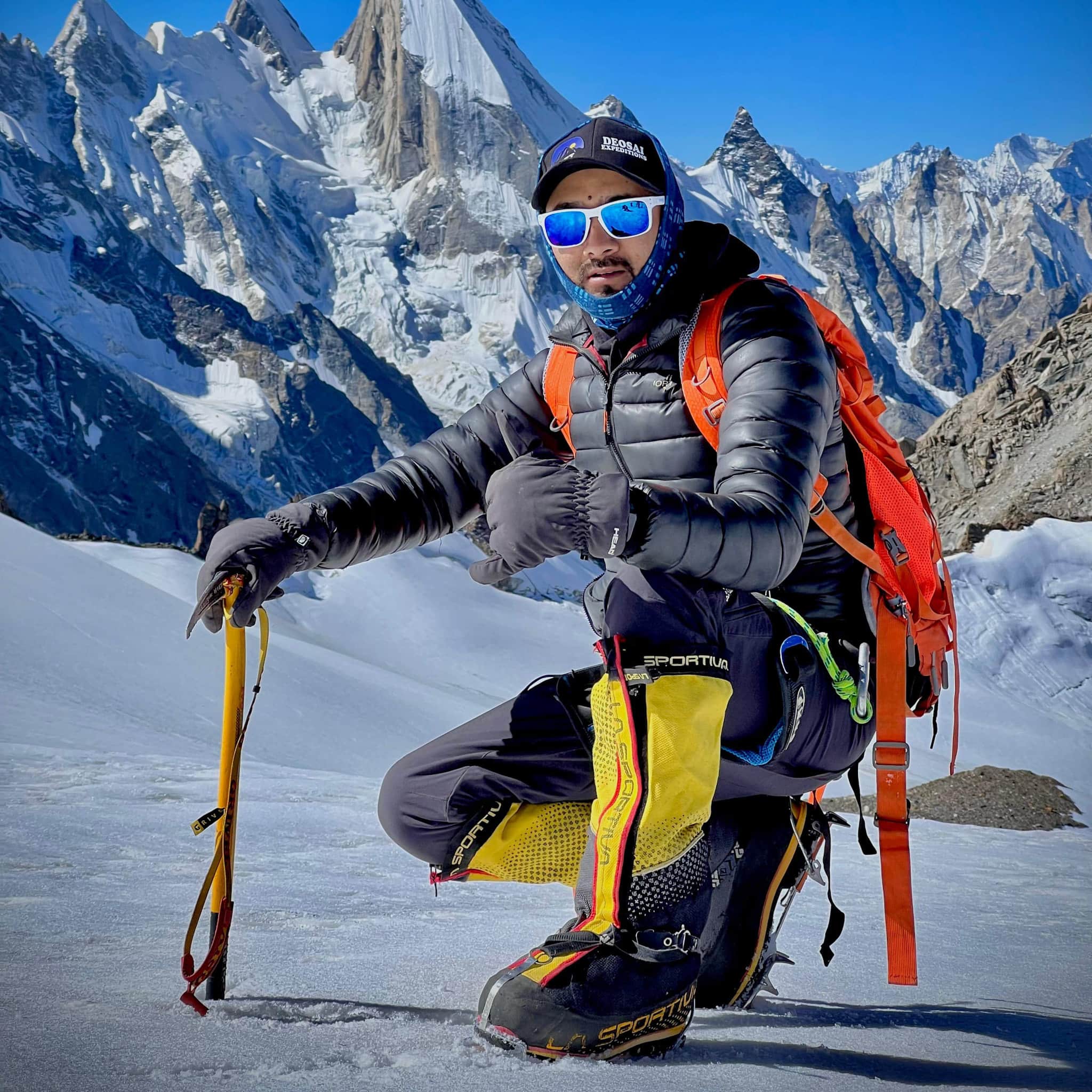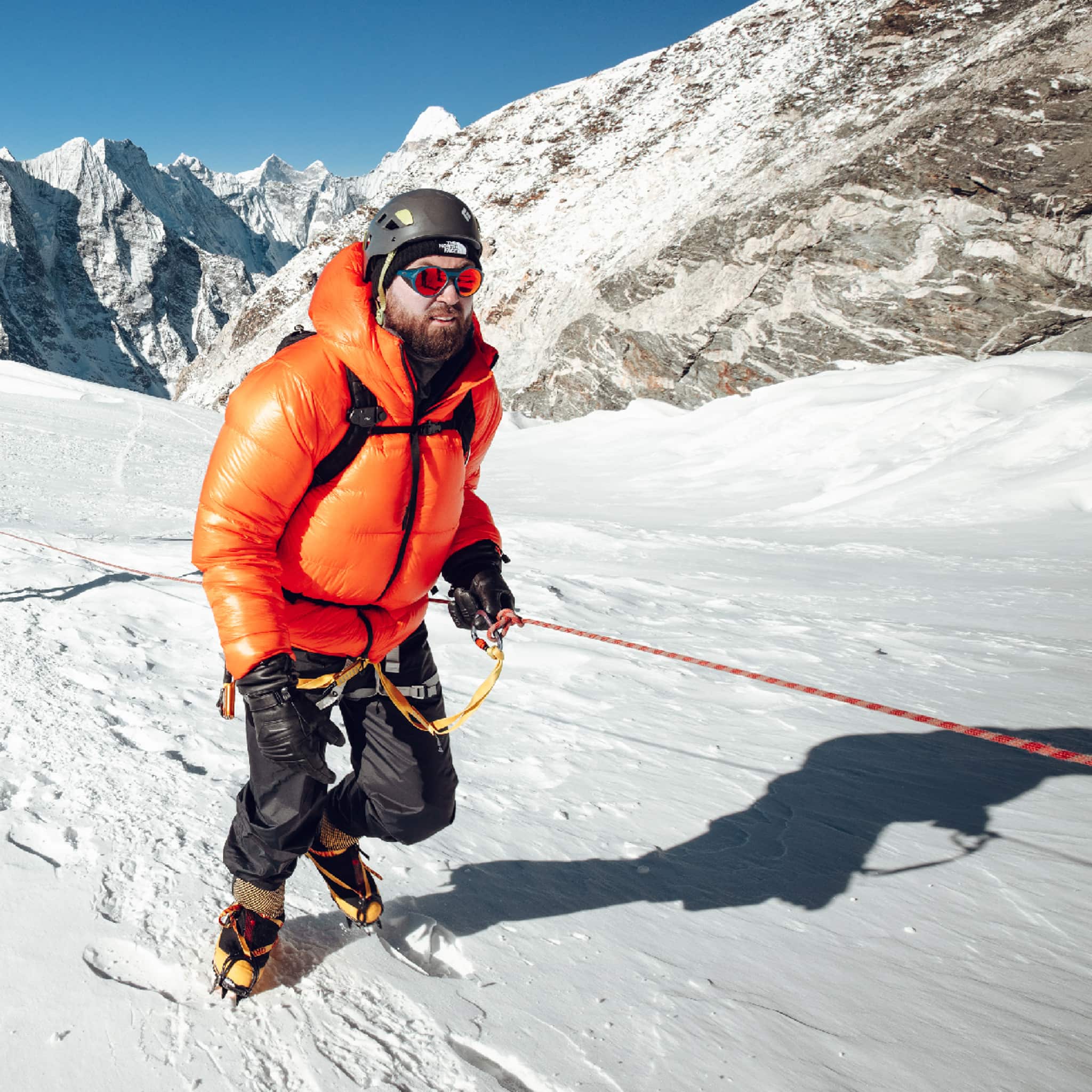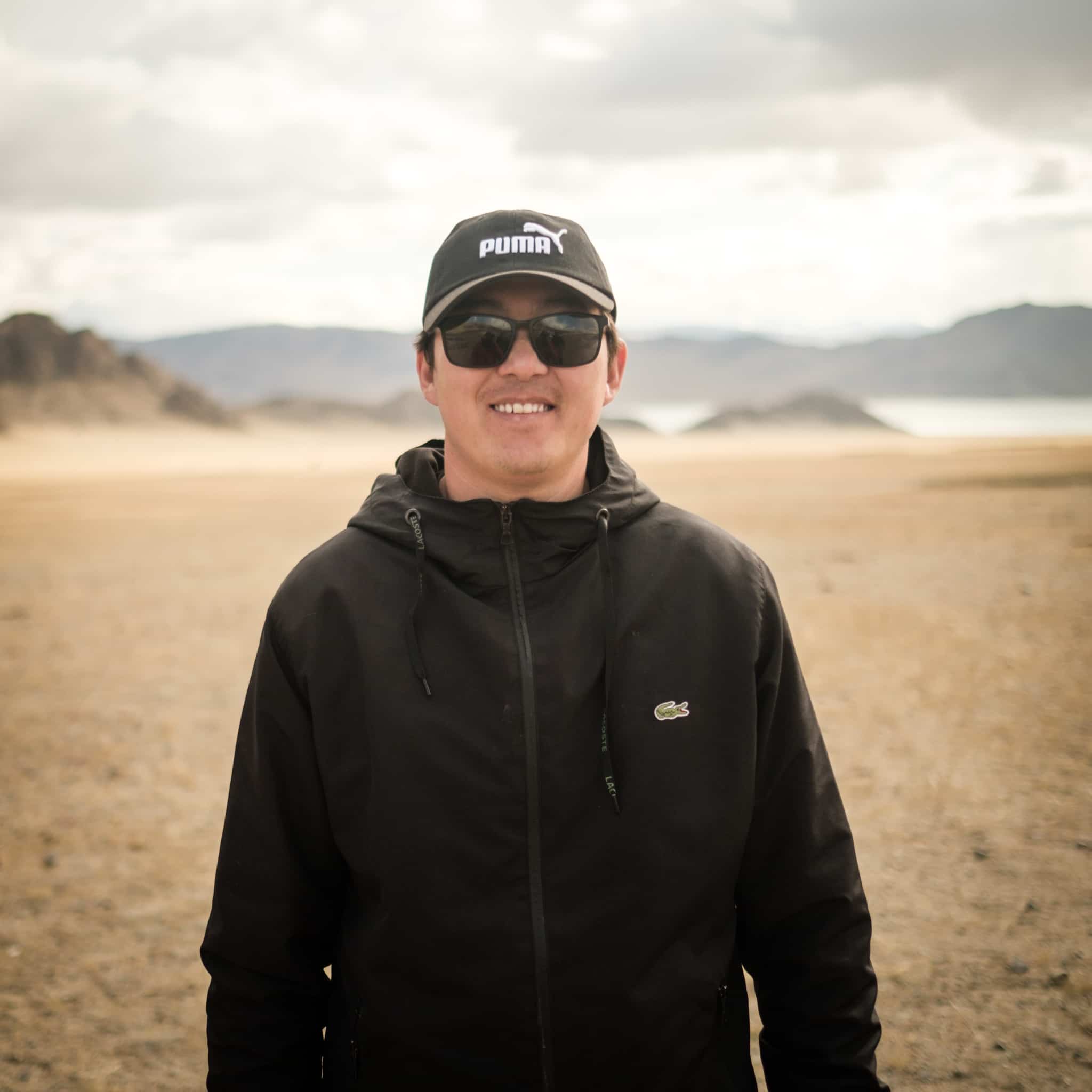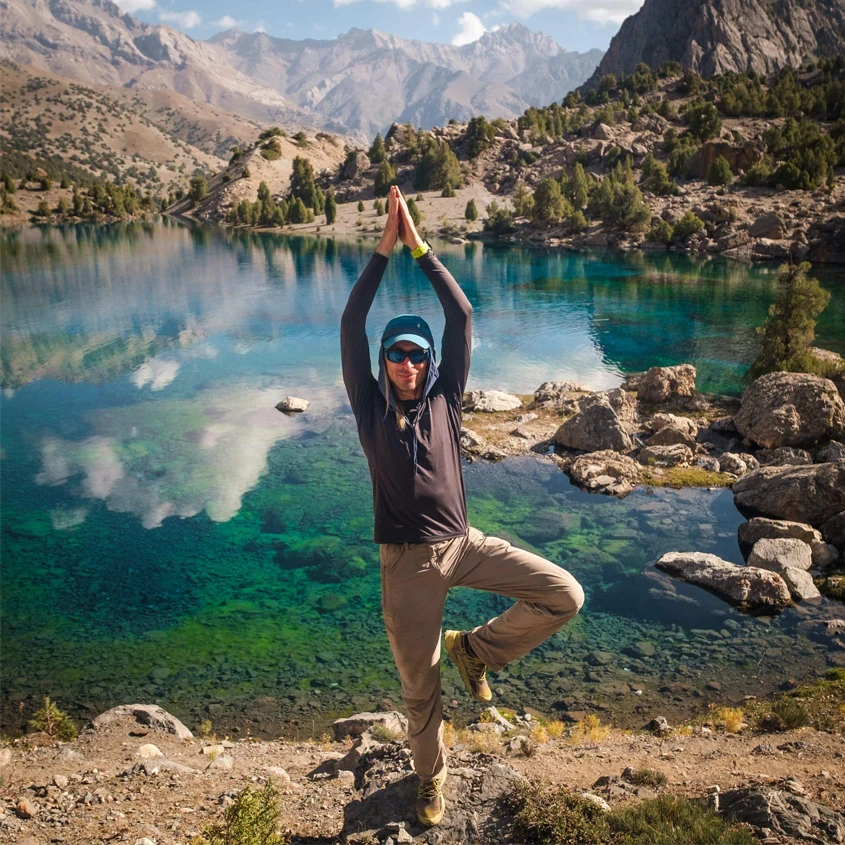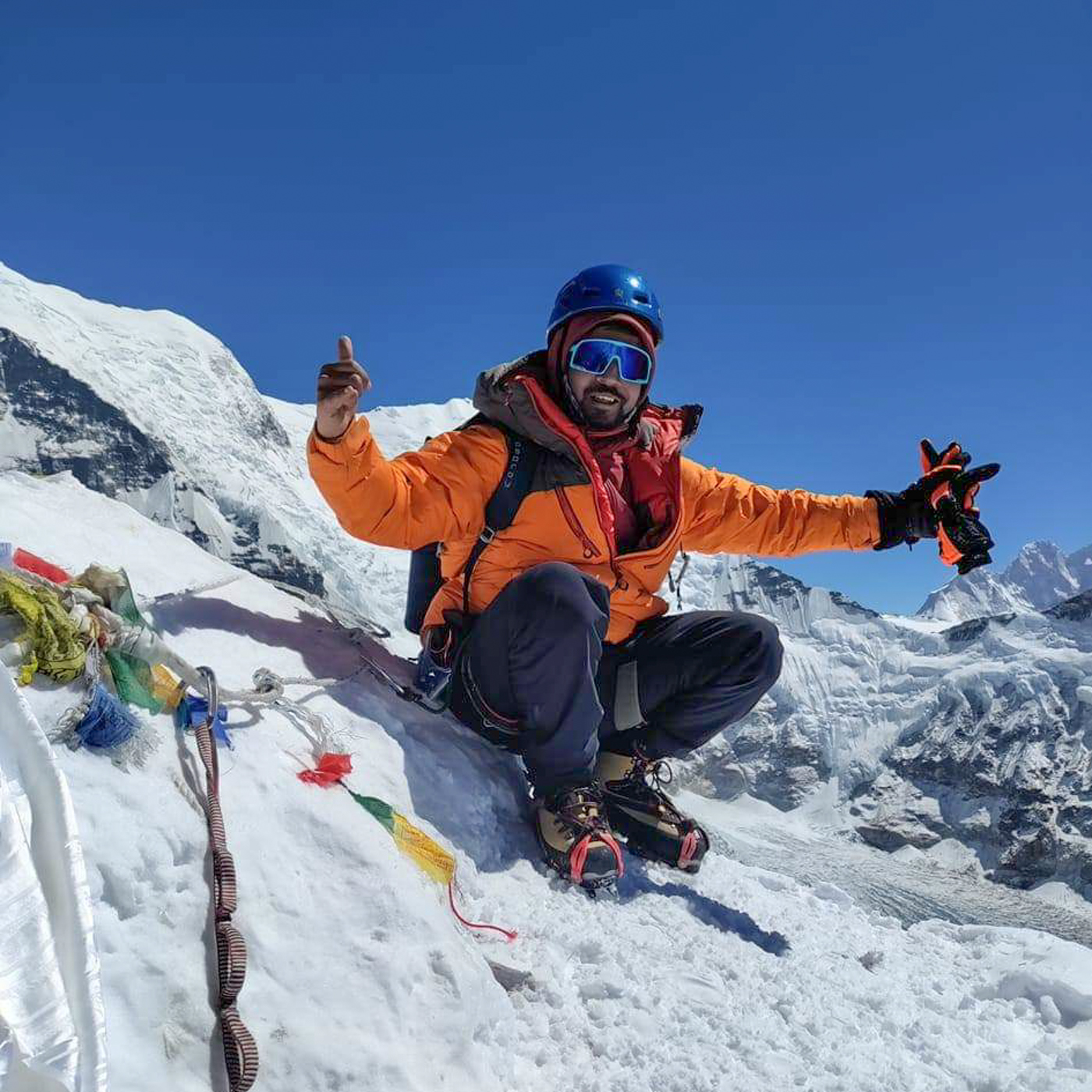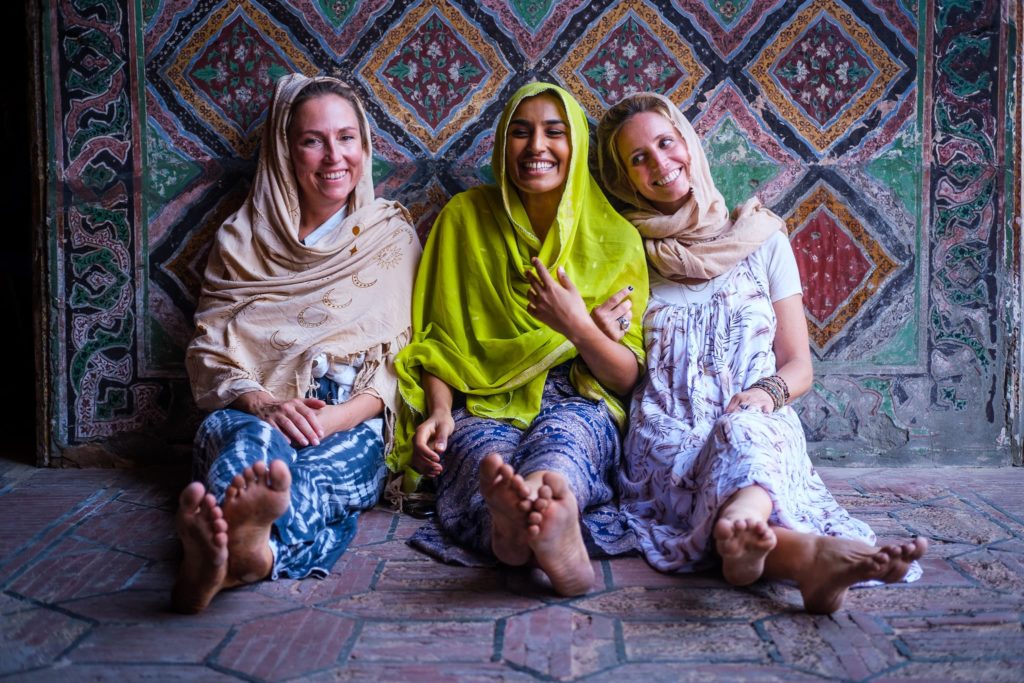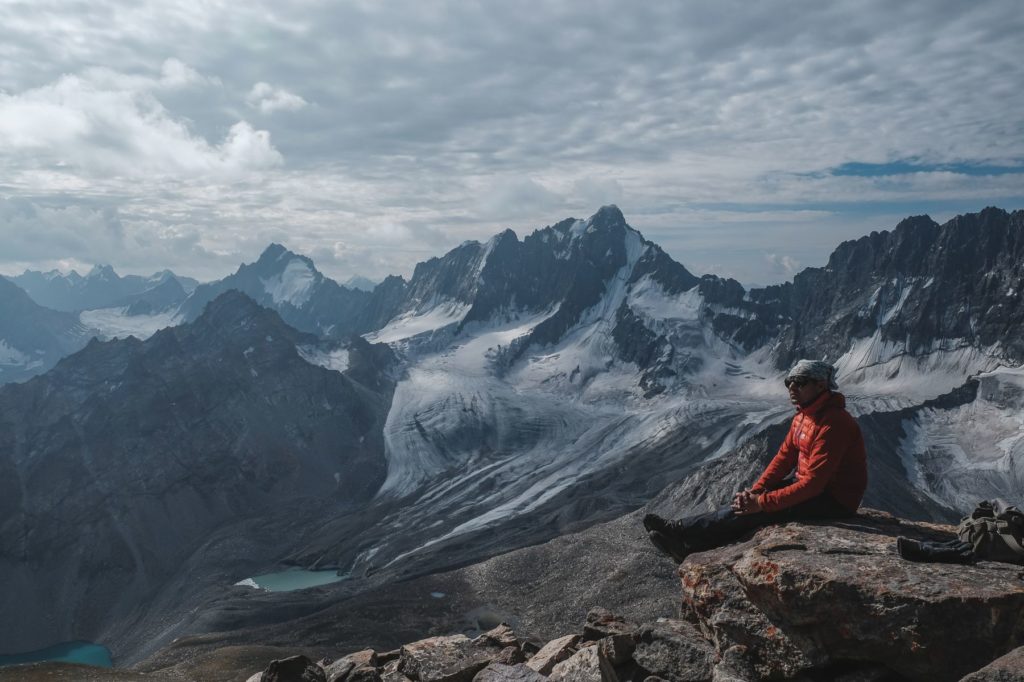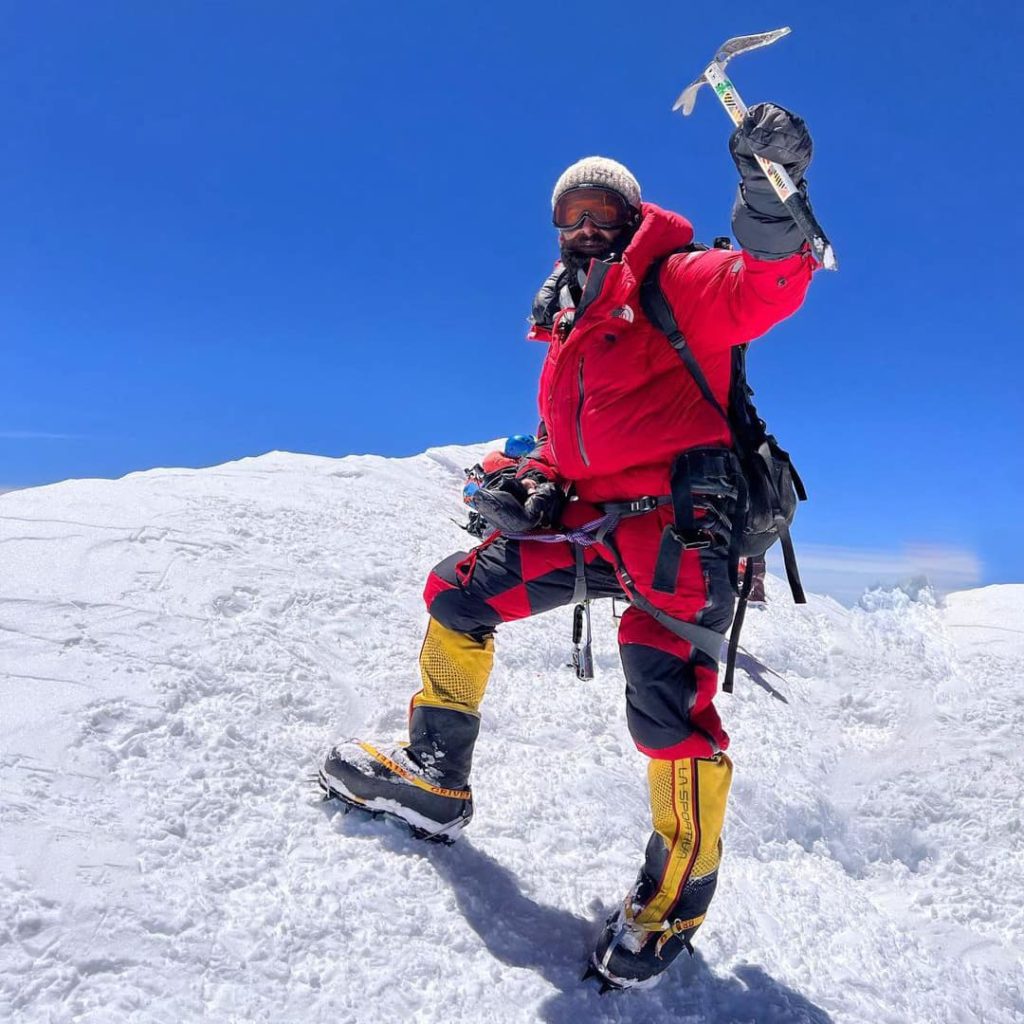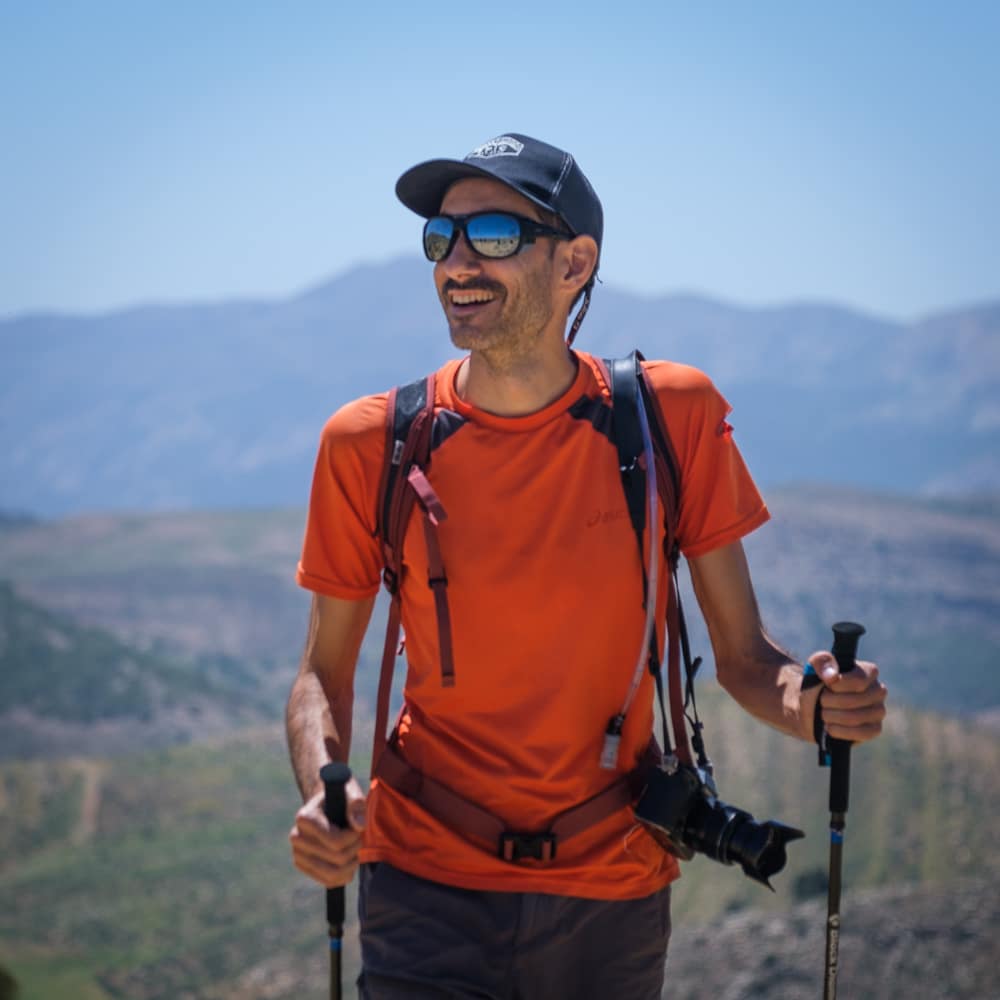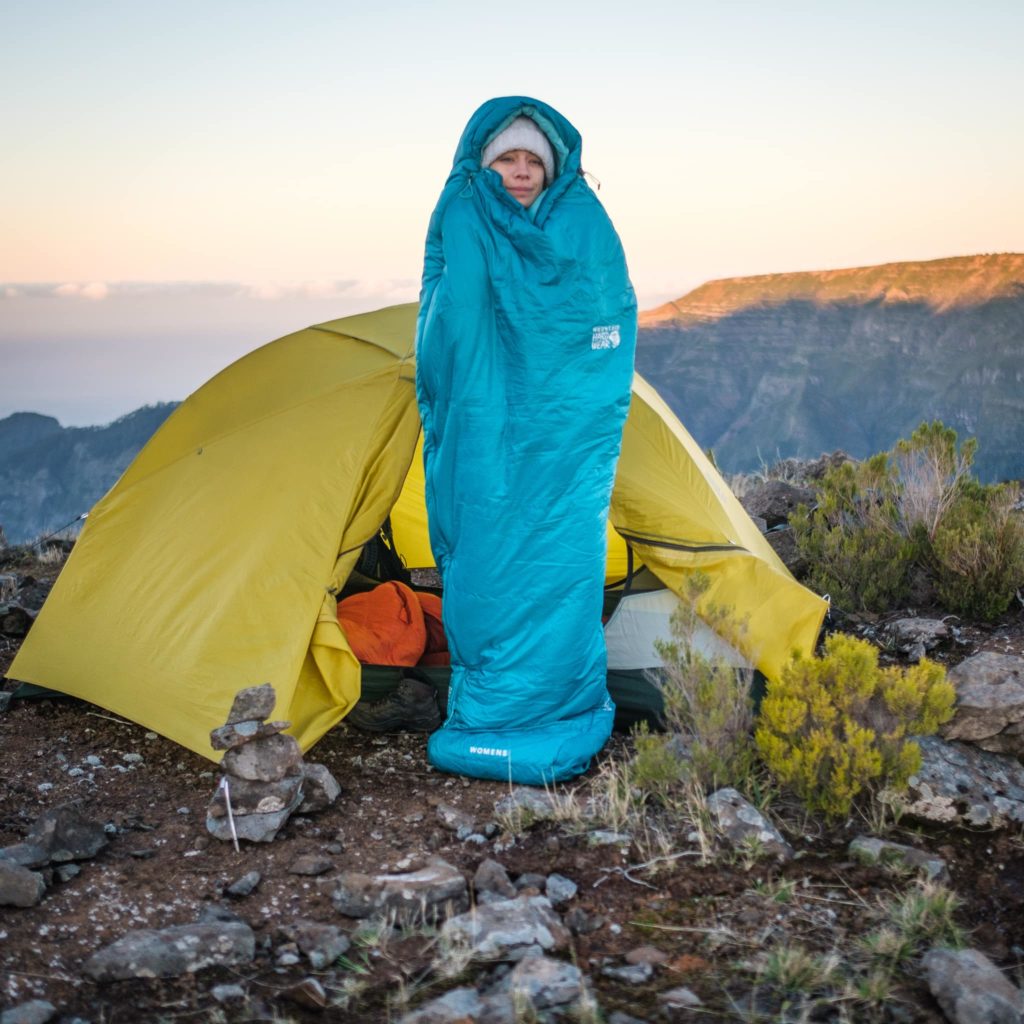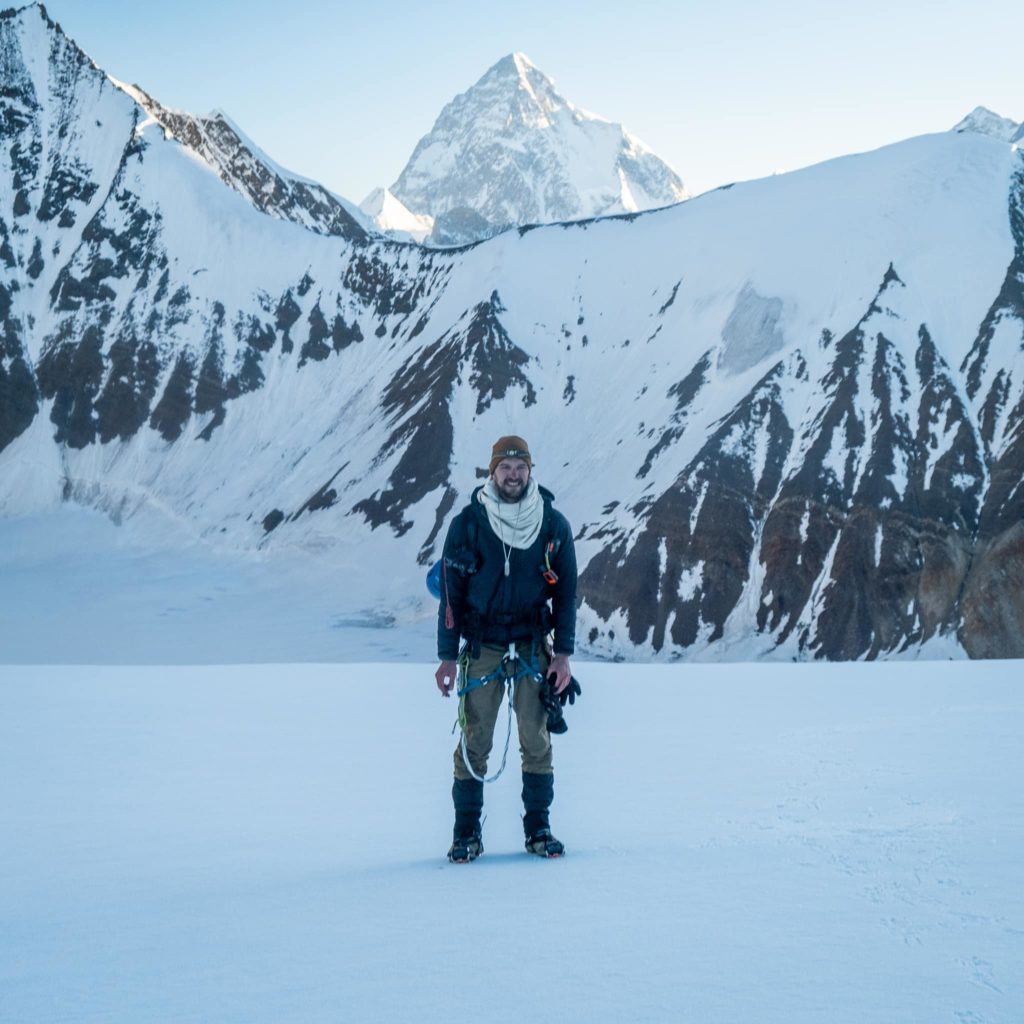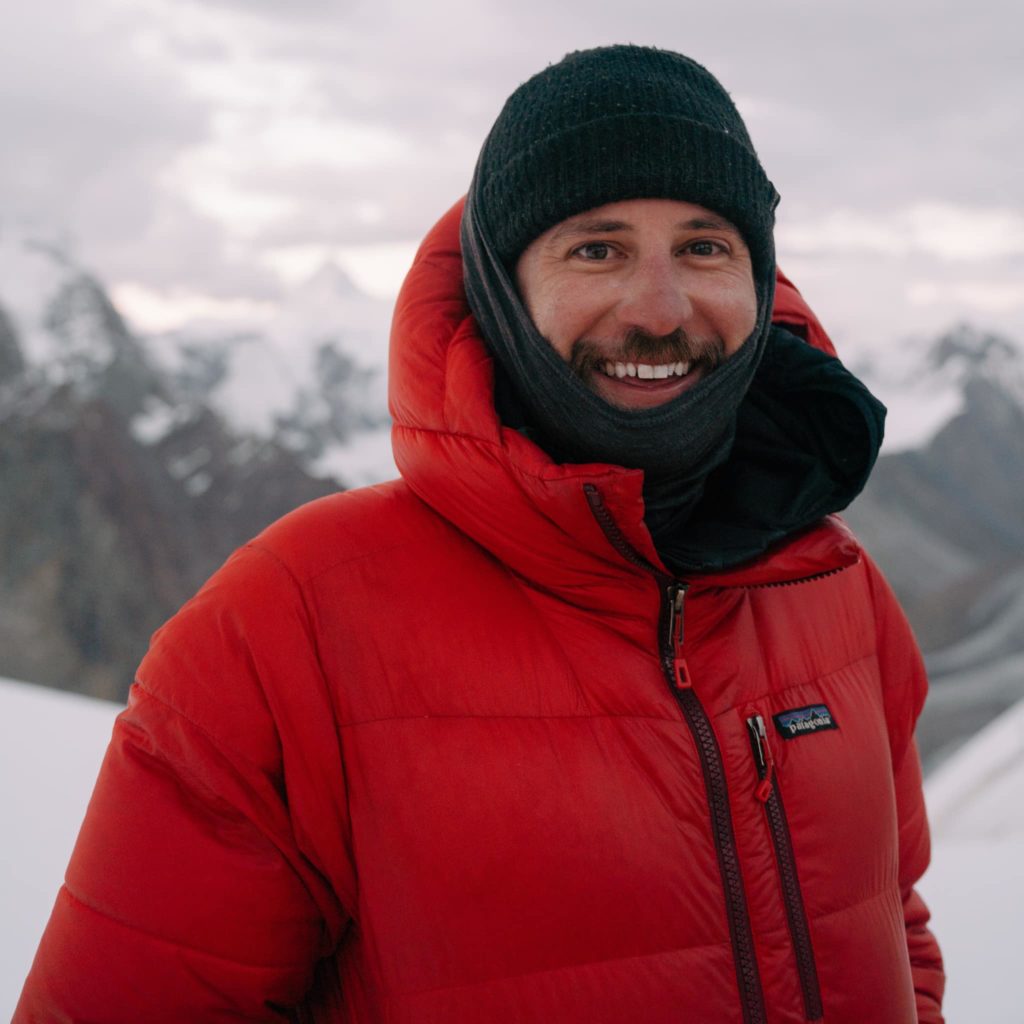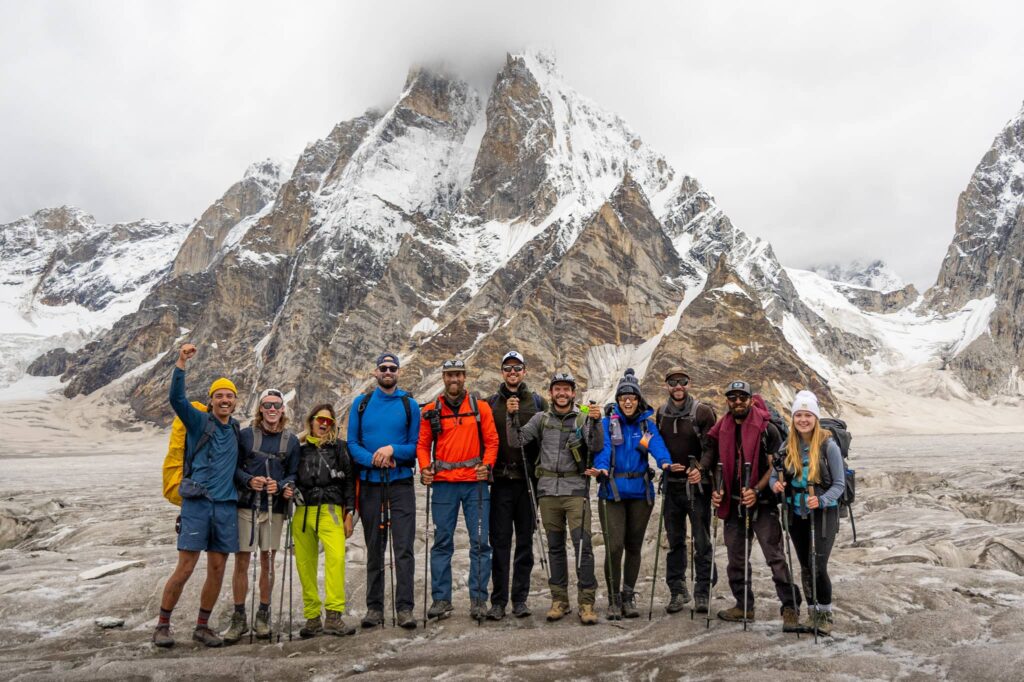Climbing the Volcanoes of Ecuador
At a Glance
DIFFICULTY: Strenuous
MAX ALTITUDE: 6,310 m
TOUR DURATION: 13 days
LODGING: Mix of hotels, haciendas, camping
GROUP SIZE: 6-12 people
Ecuador Volcano Climbing Overview
Welcome to Ecuador: the land of world-class surfing, the Amazon Rainforest, and the Andes Mountains. Ecuador is one of the most bio-diverse countries on earth and one of the most fascinating countries one can visit in South America.
12 years ago, Epic Founder Chris Lininger spent six months exploring Ecuador and fell in love with the country and its people. Now, Chris and Epic Expeditions are heading back to climb Ecuador’s highest peaks (and active volcanoes).
Our goals will be climbing Ecuador’s two major volcanoes: Cotopaxi (5,897m/19,347ft), and Chimborazo (6,310m/20,702ft).
For those of you who have joined us for a multi-day trekking expedition before, this is a great next step to challenge yourself at higher altitudes and attempt new peaks in one trip. If you are new to Epic Expeditions, this trip is a great place to start your adventure journey with us. Climbing Ecuador’s volcanoes is accessible, fun, and a great test for outdoor adventurers.
Are you ready for the challenge?
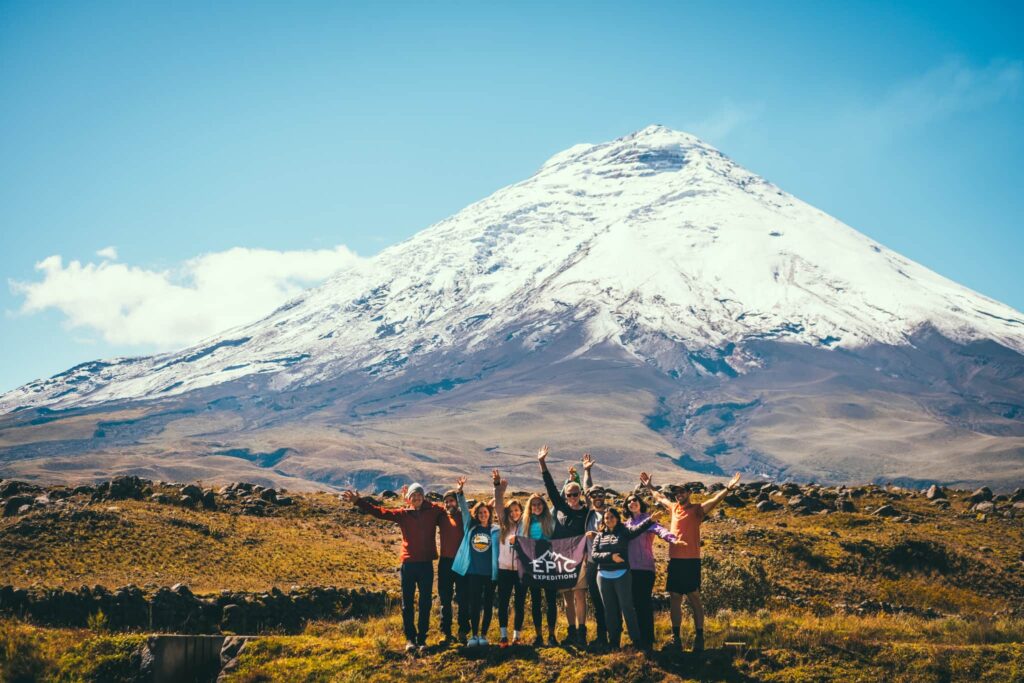
Who This Trip is For
This Ecuadorian climbing trip is for you if you want to experience…
- 2 Volcano Climbs in 1: There are few other destinations in the world where you can summit multiple 5000+ meter peaks in a week or less. For those who are short on time and want to climb as much as possible, mountain climbing in Ecuador is a rare opportunity.
- A step up from trekking: though the volcanos of Ecuador are no walk in the park, they are relatively accessible to new or aspiring climbers. For those of you who have joined Epic in the past on longer treks, like K2 Base Camp or the Fann Mountains, this itinerary will provide an excellent challenge.
- The chance to develop alpine skills: over the course of two weeks hiking around Ecuador’s volcanoes, you will be exposed to not only a variety of physical and mountainous trials but also new climbing equipment and techniques. Although this is not a technical mountaineering course, it is still an educational experience.
- Diverse Andean landscapes: Ecuador is famous for its geographical and biological diversity. While the alpine areas will be our main focus, guests will still have plenty of opportunities to see Ecuador’s bustling cities, jungles, highlands, and watersheds.
- Comfortable camps and accommodation: of the 12 nights featured on this Ecuador volcanoes expedition, only 1 will require us to be sleeping in tents. The rest will be a mixture of welcoming haciendas, hotels, and mountain huts. While we love crashing in a tent after a long day, we’ll take modern amenities when we can.
- Real team spirit: by now, Epic Expeditions has a very loyal following. We attract adventurous, optimistic people who are ready to tackle anything that comes their way. Come with us on a trip, and you’re sure to meet some like-minded people along the way, and maybe even life-long friends.
Ecuador Volcano Expedition Photo Gallery
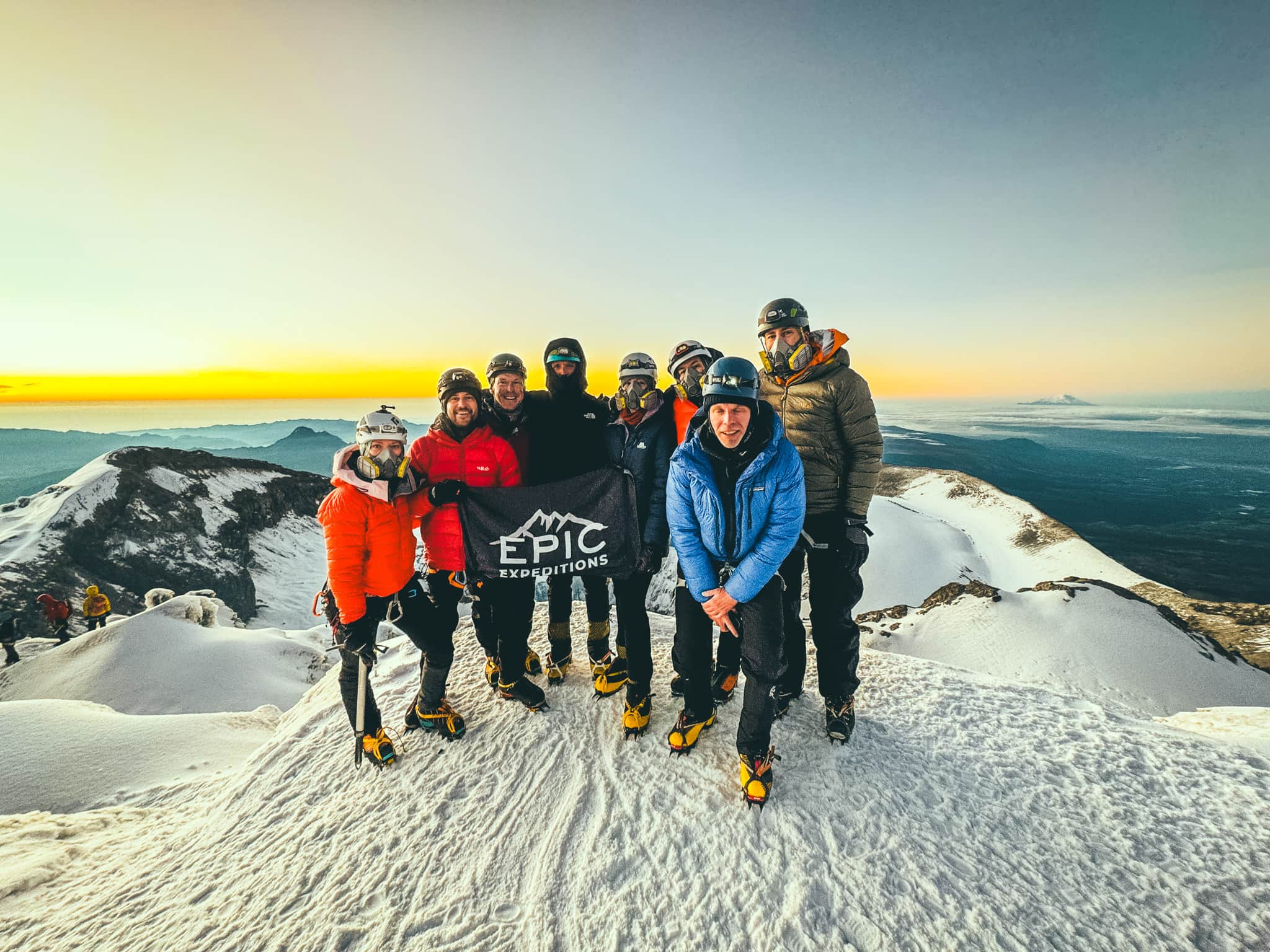
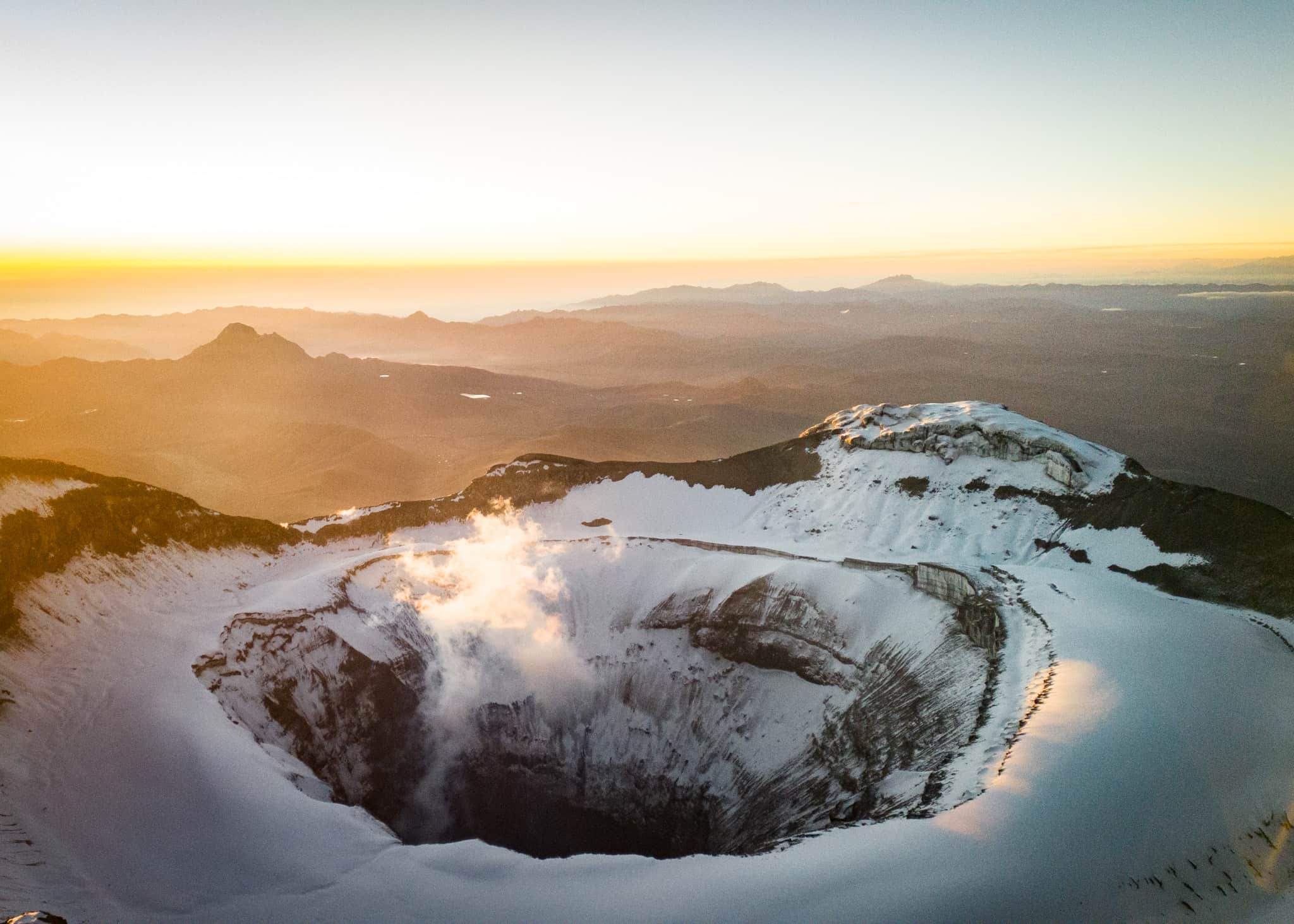
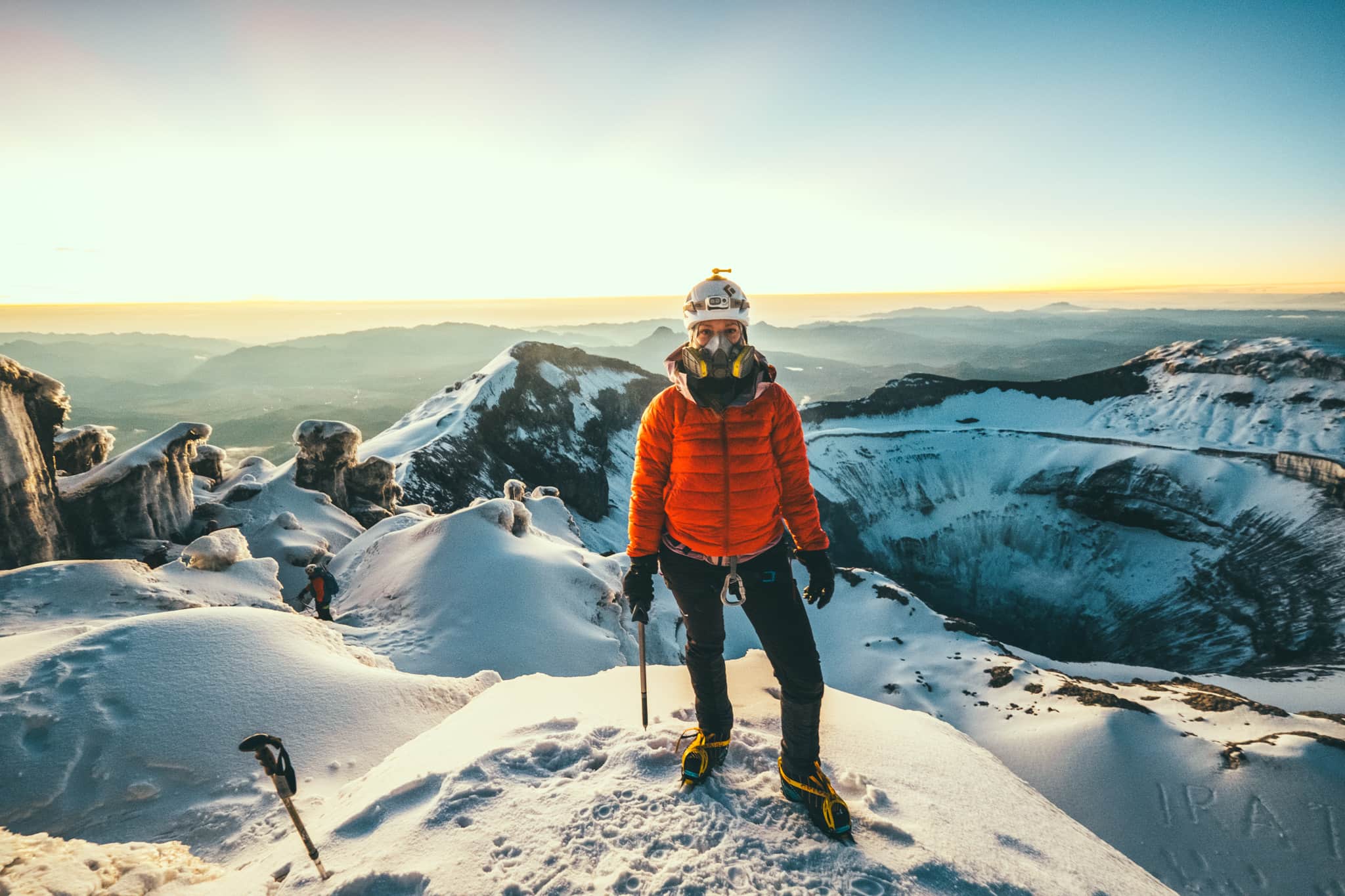
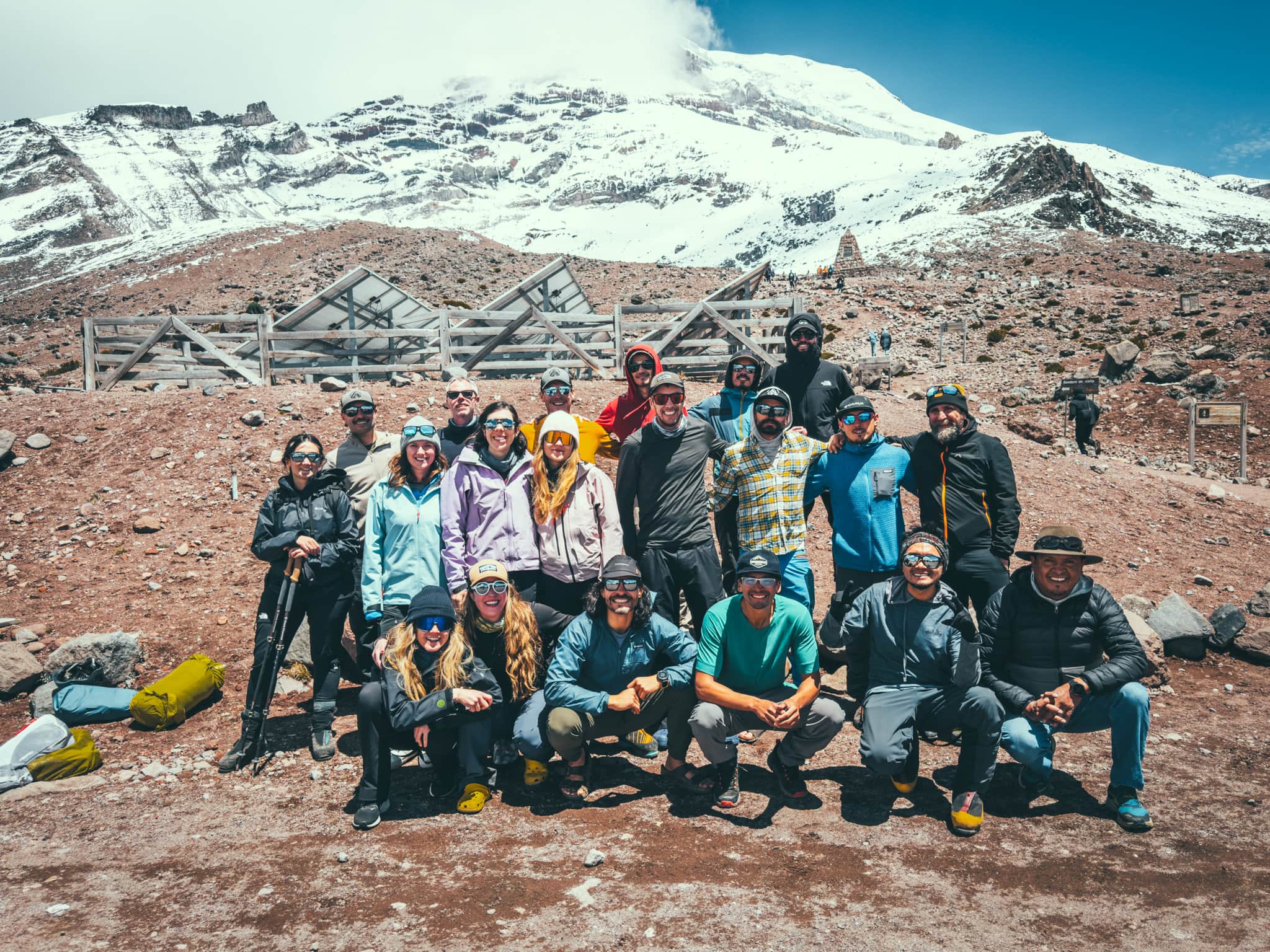
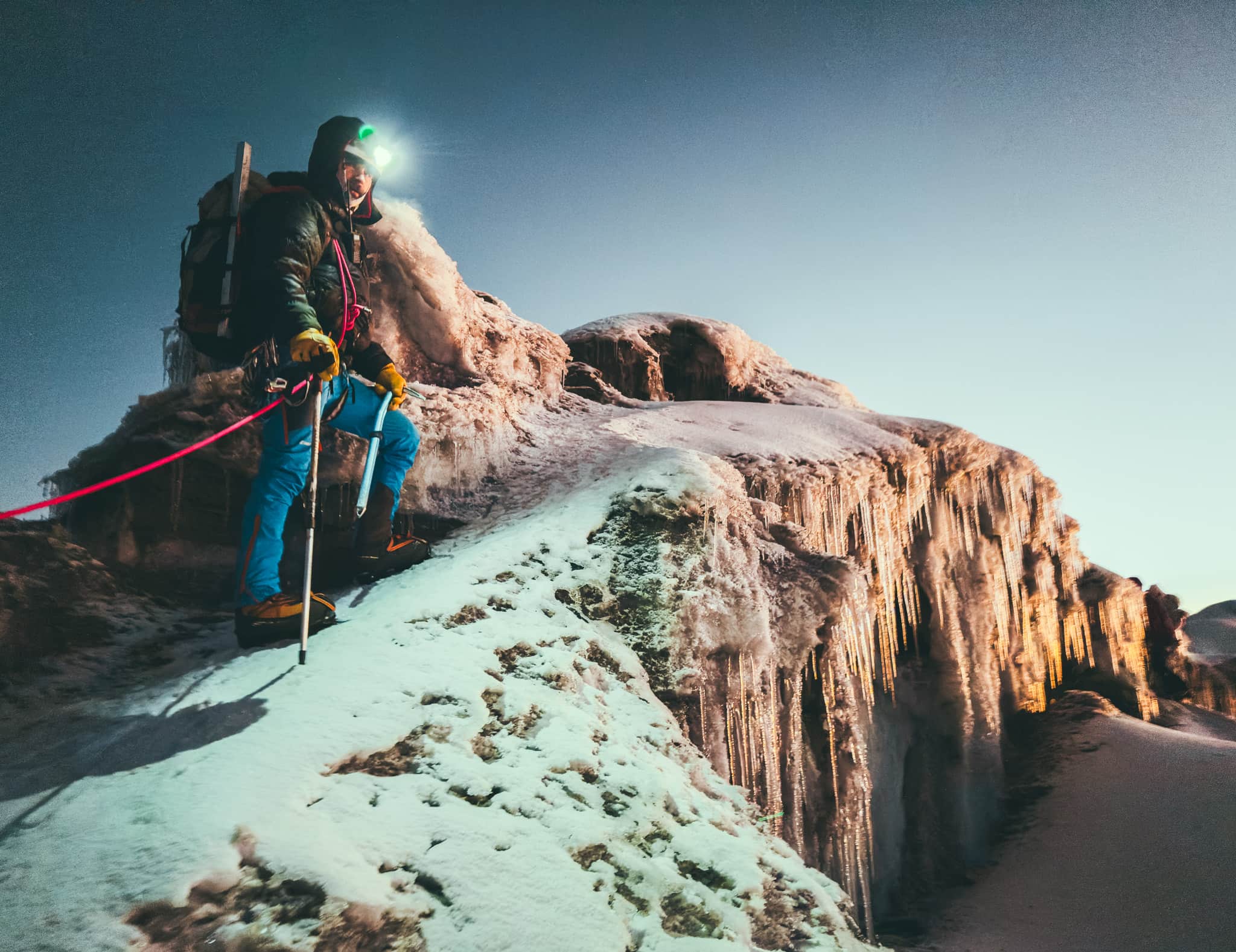
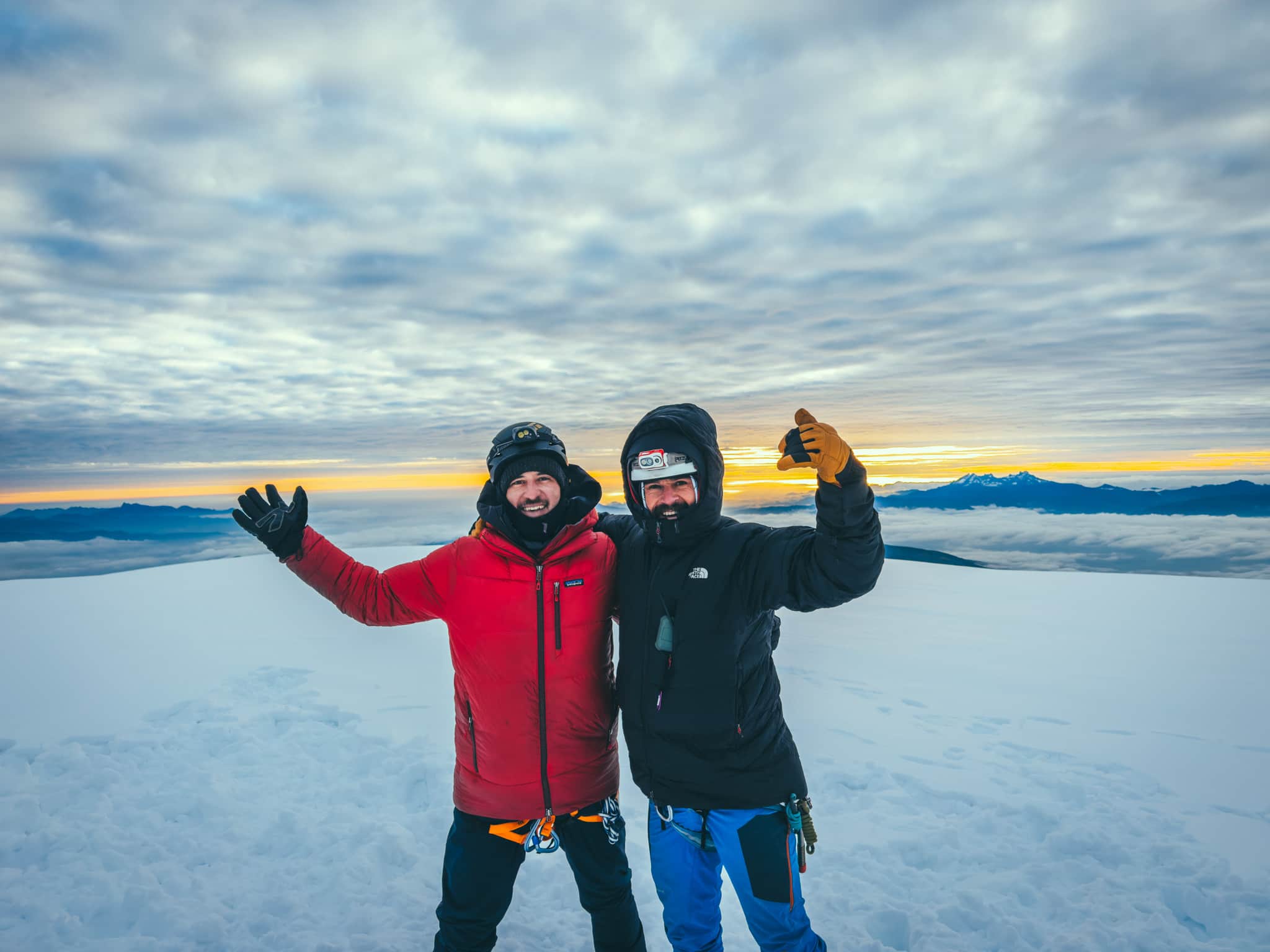
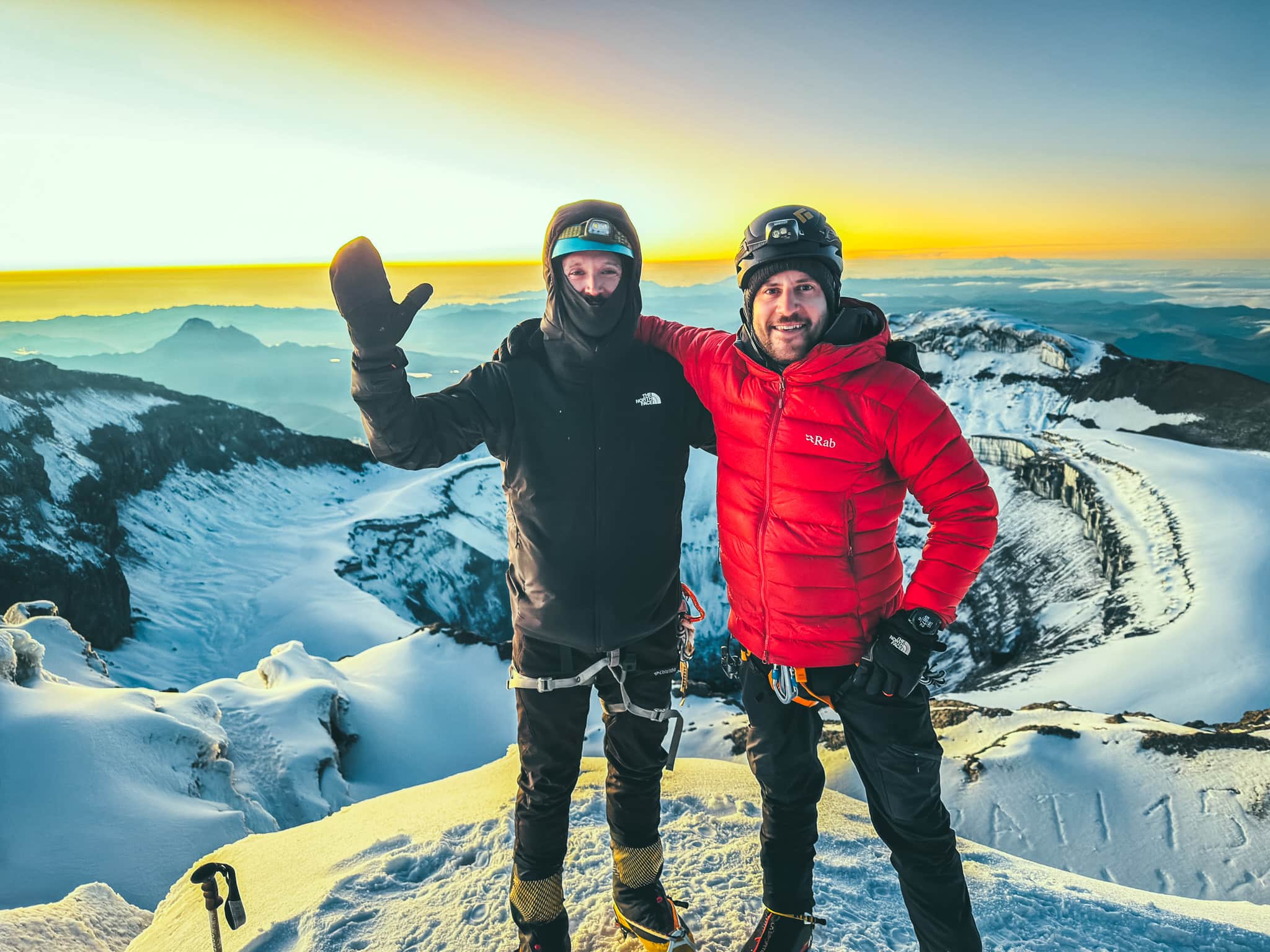

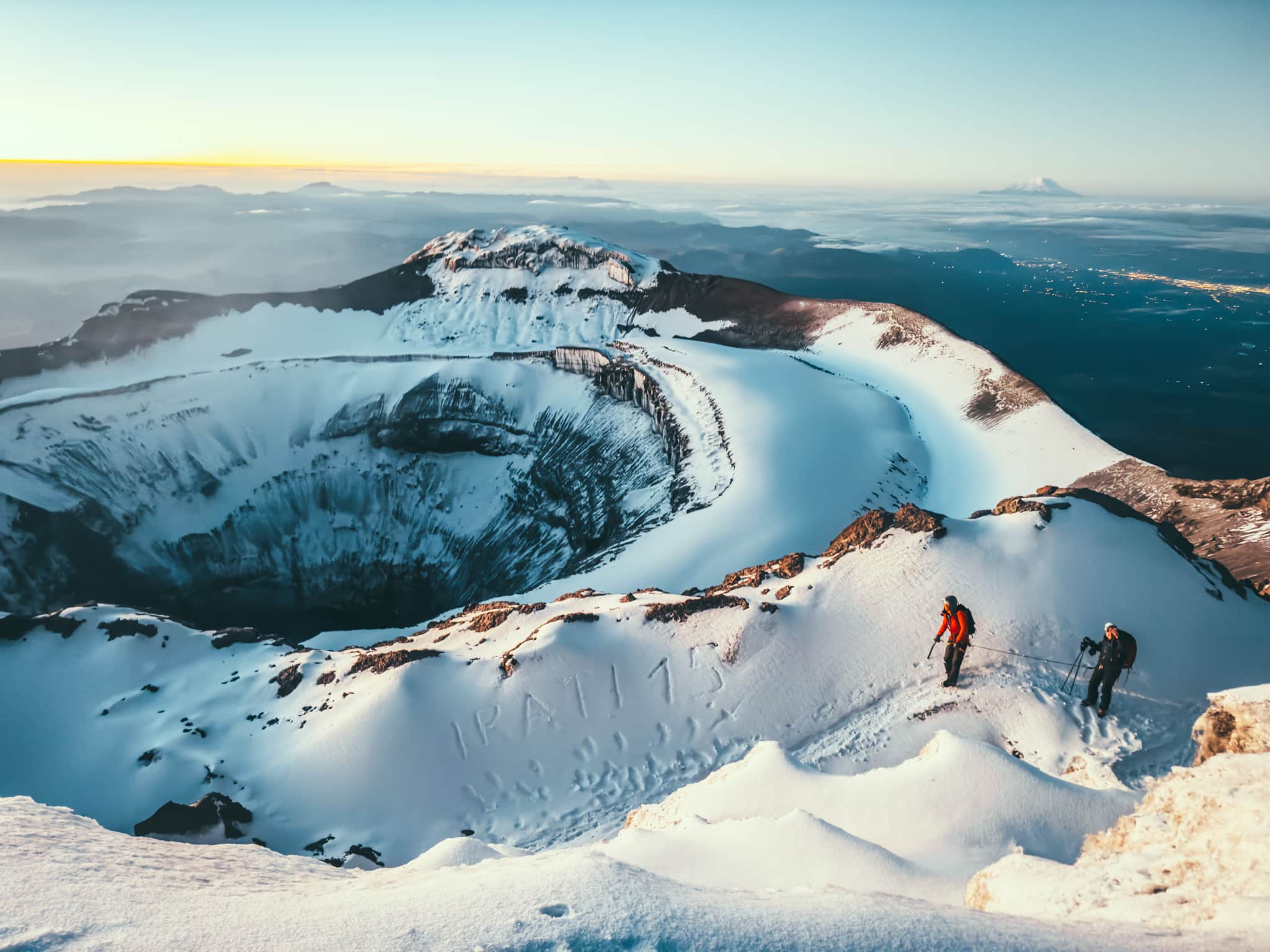

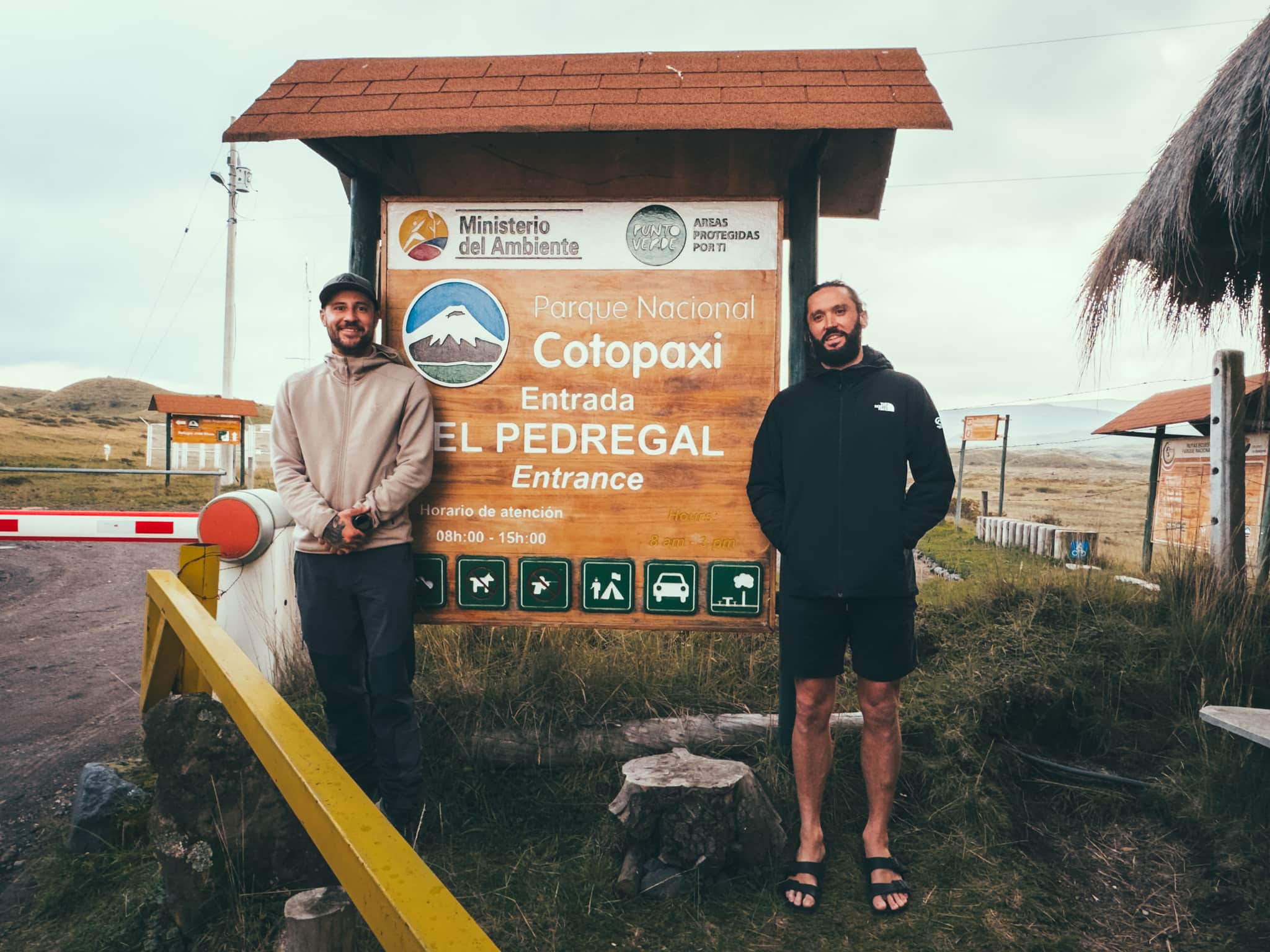
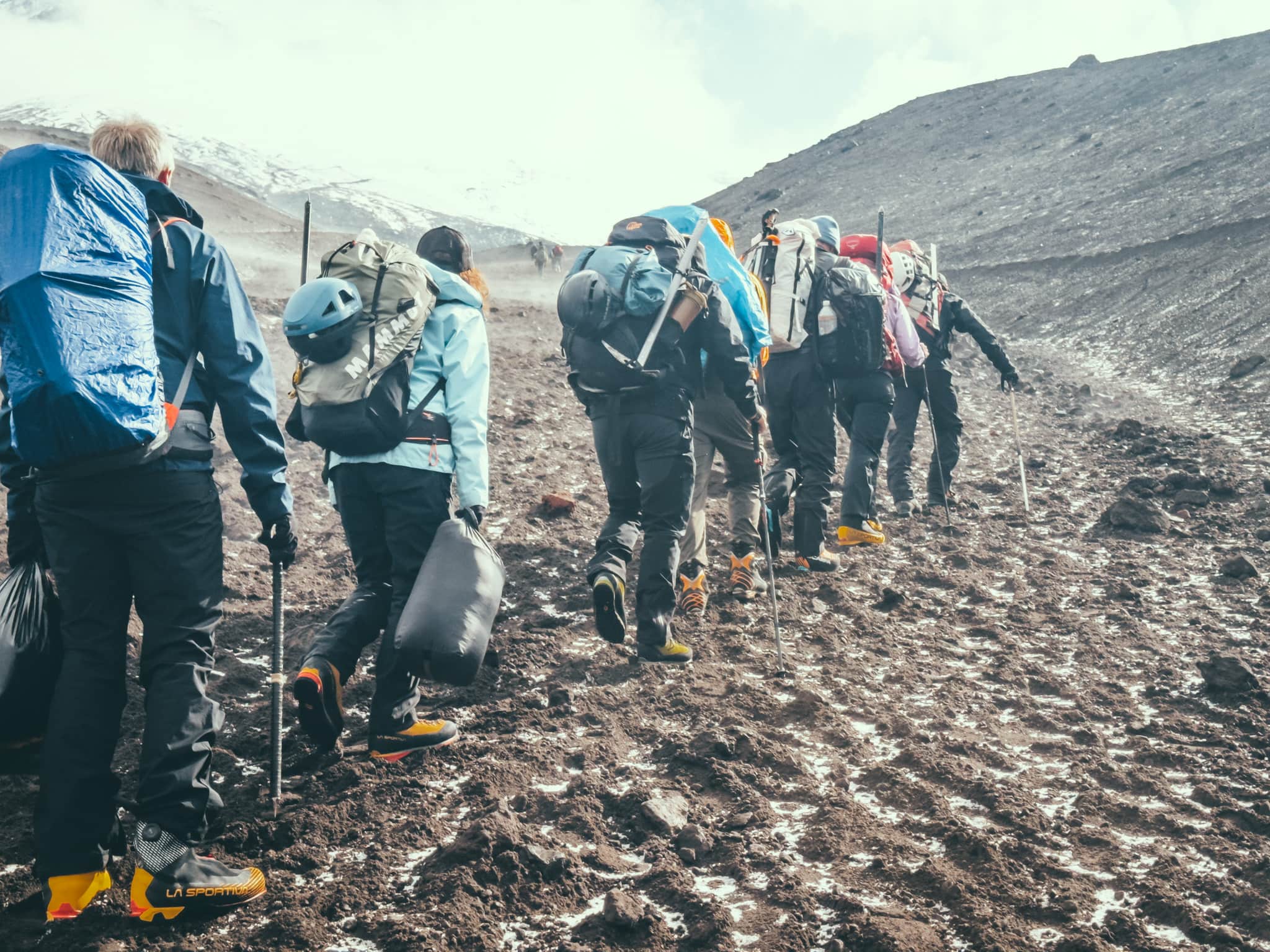
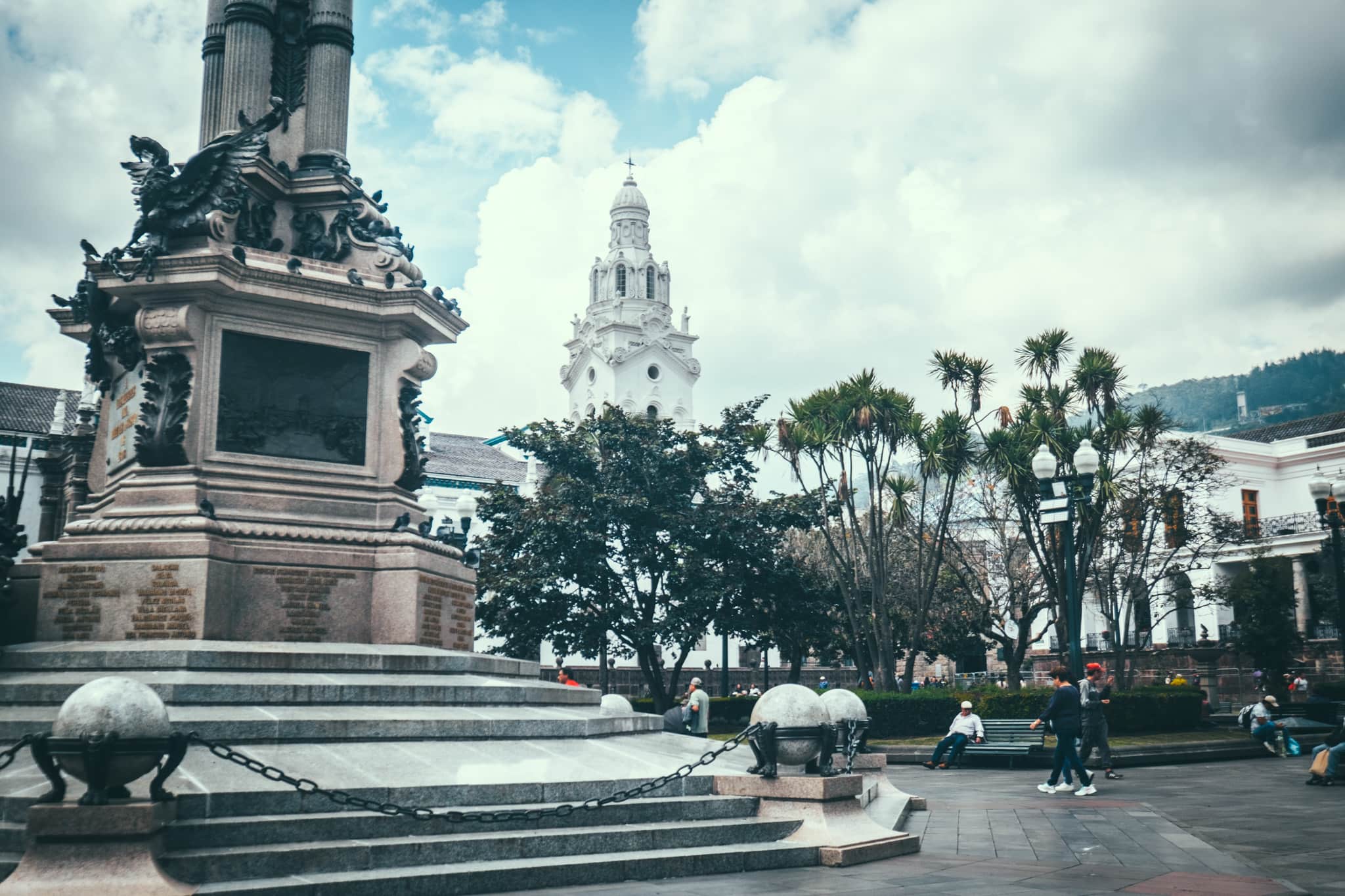
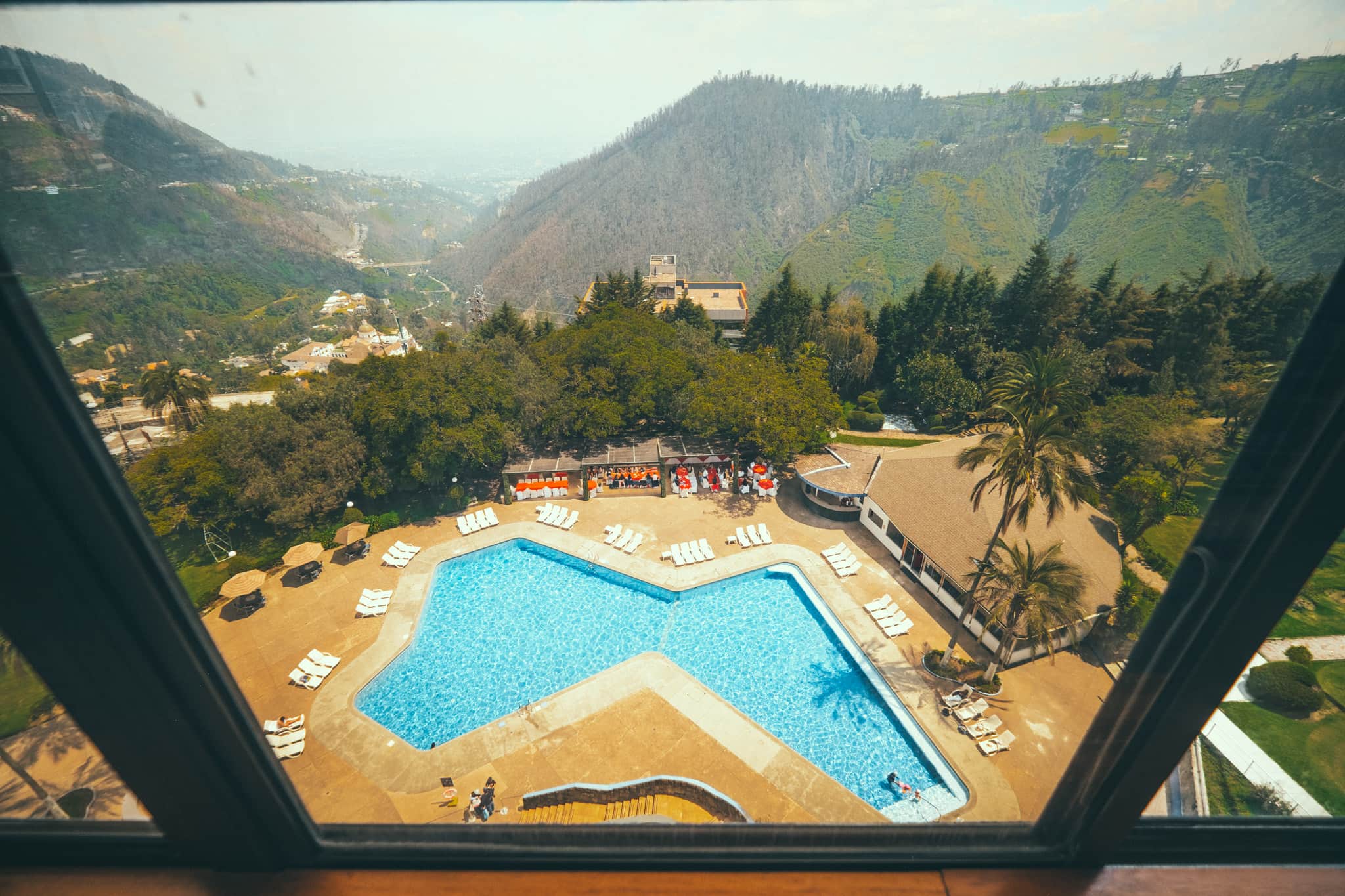
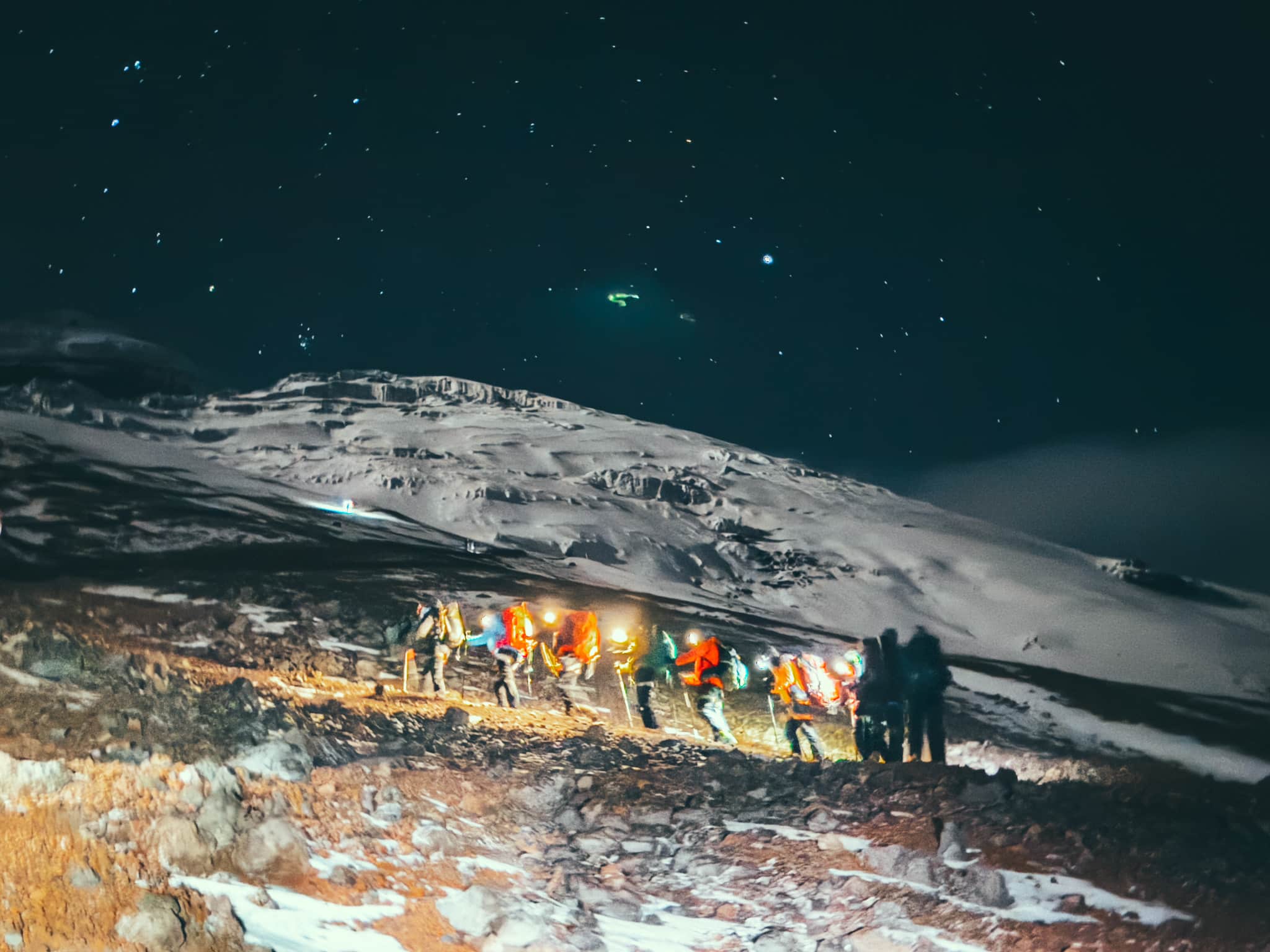


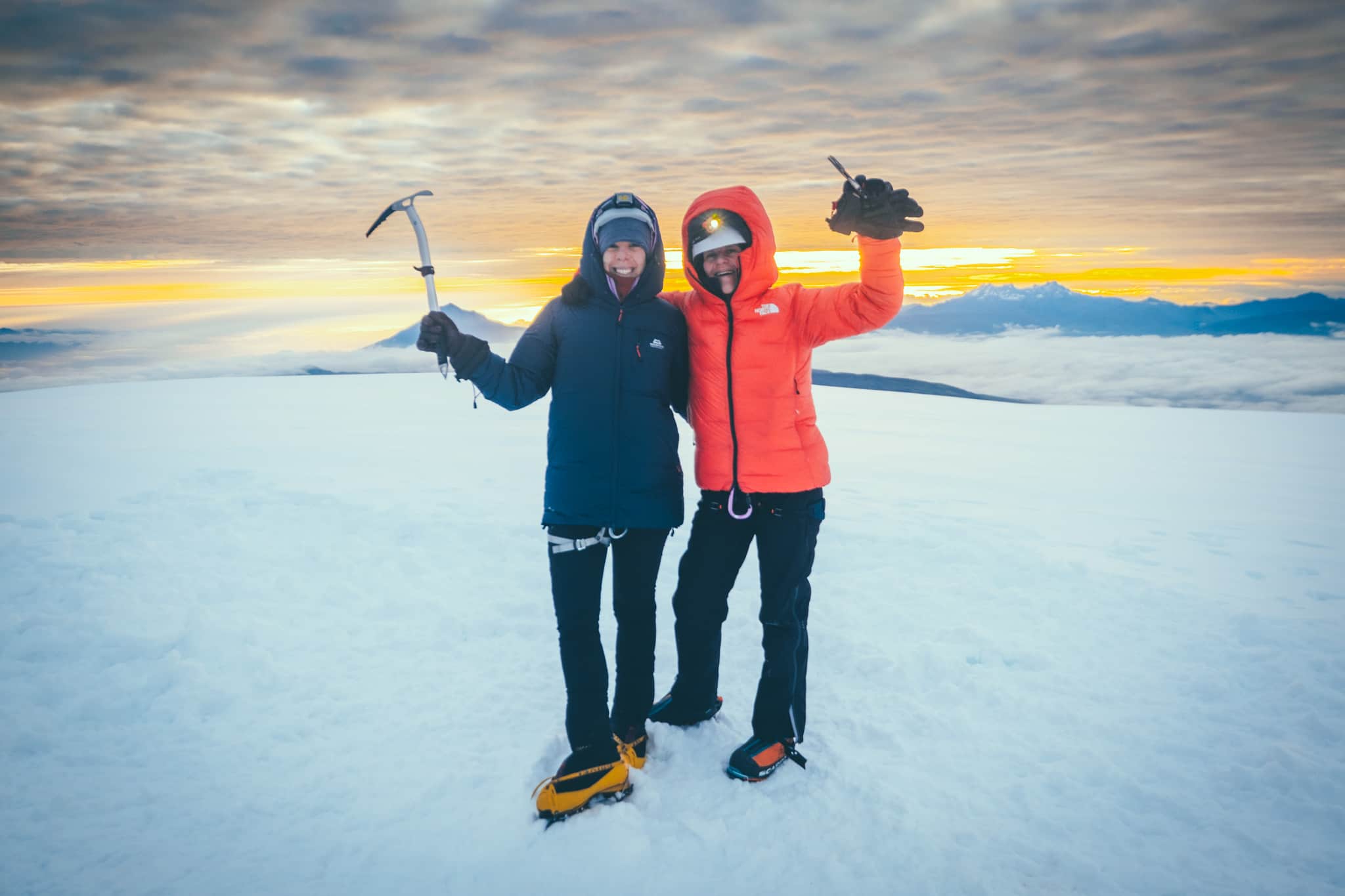
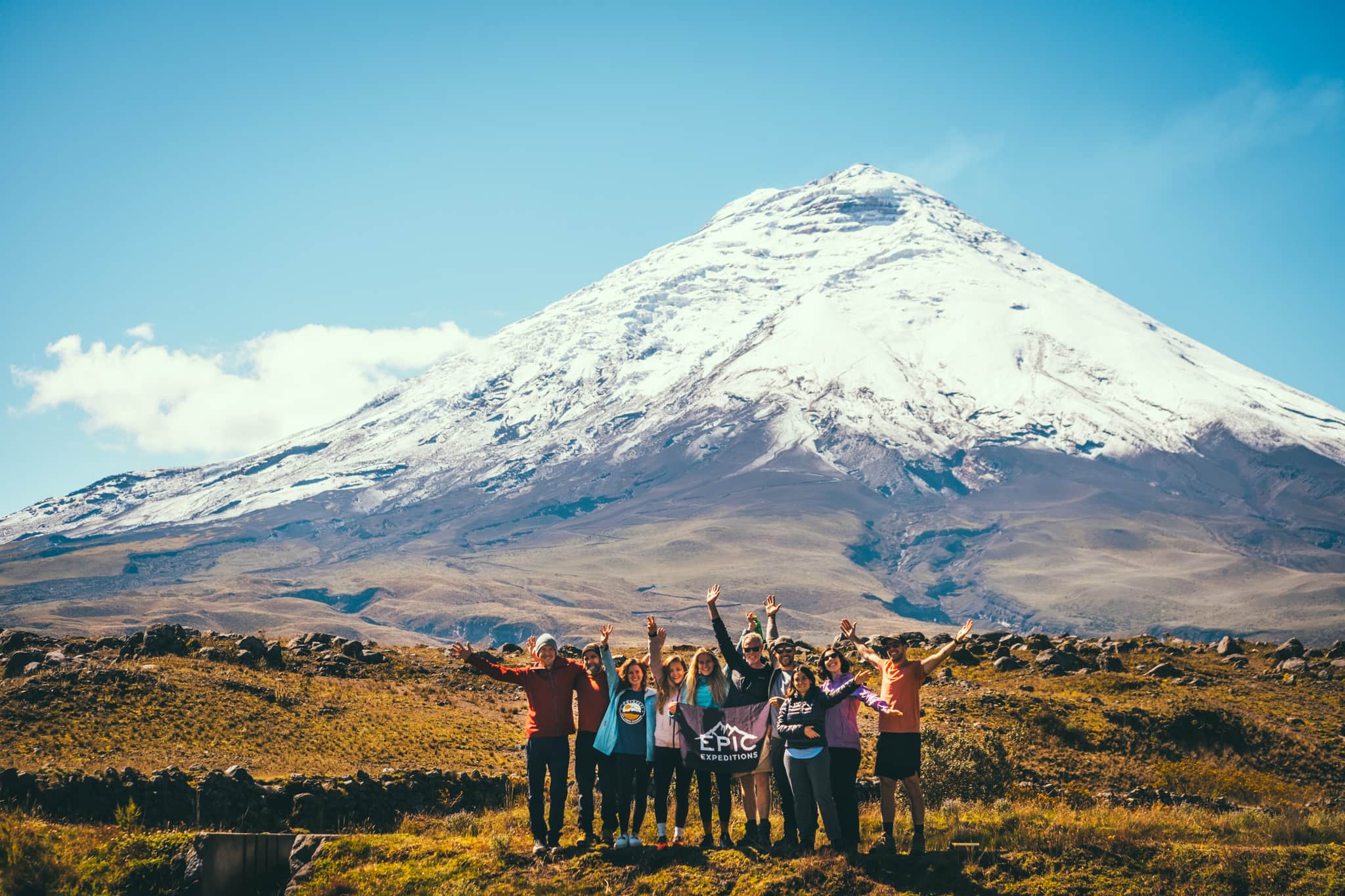
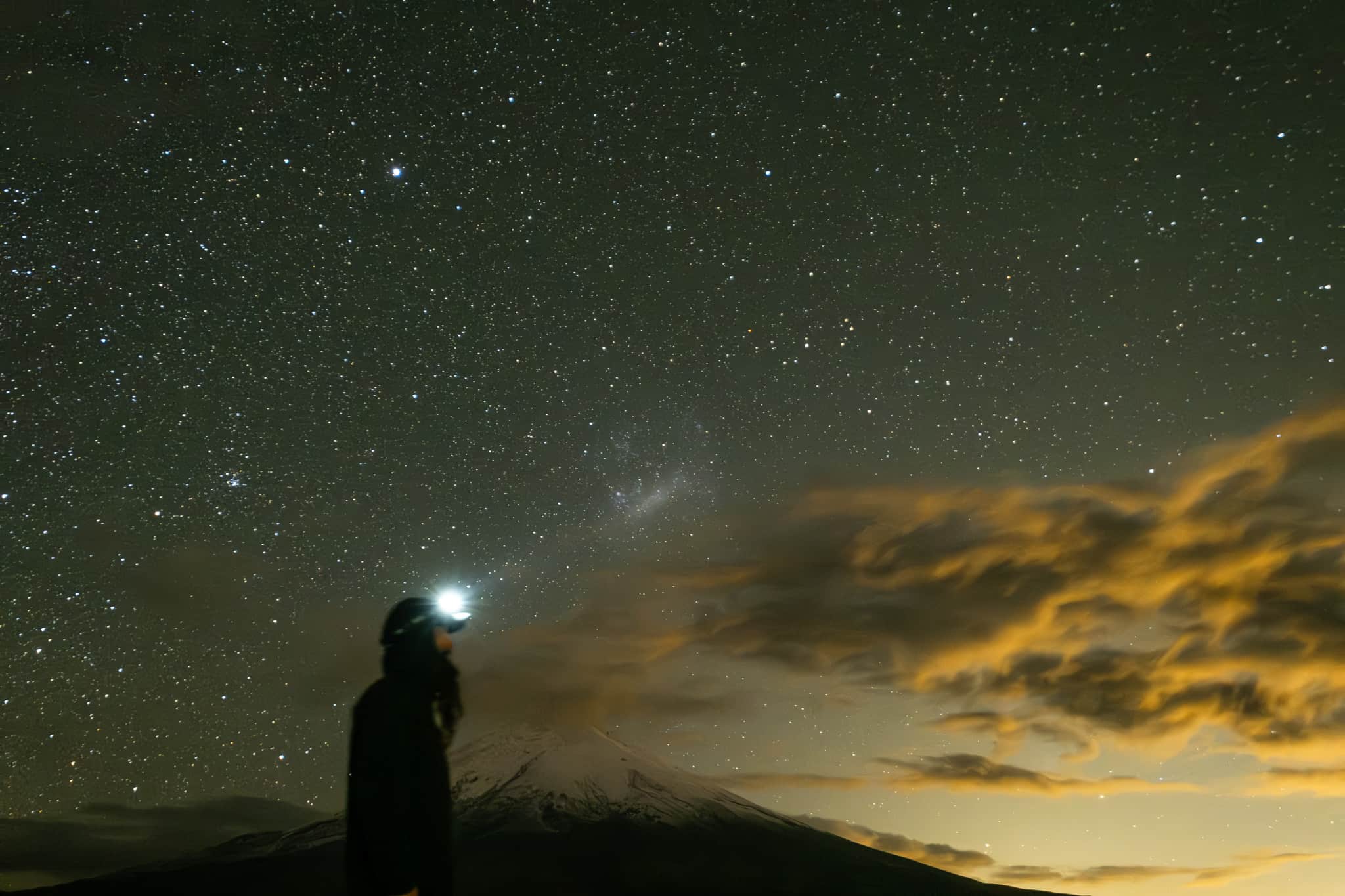
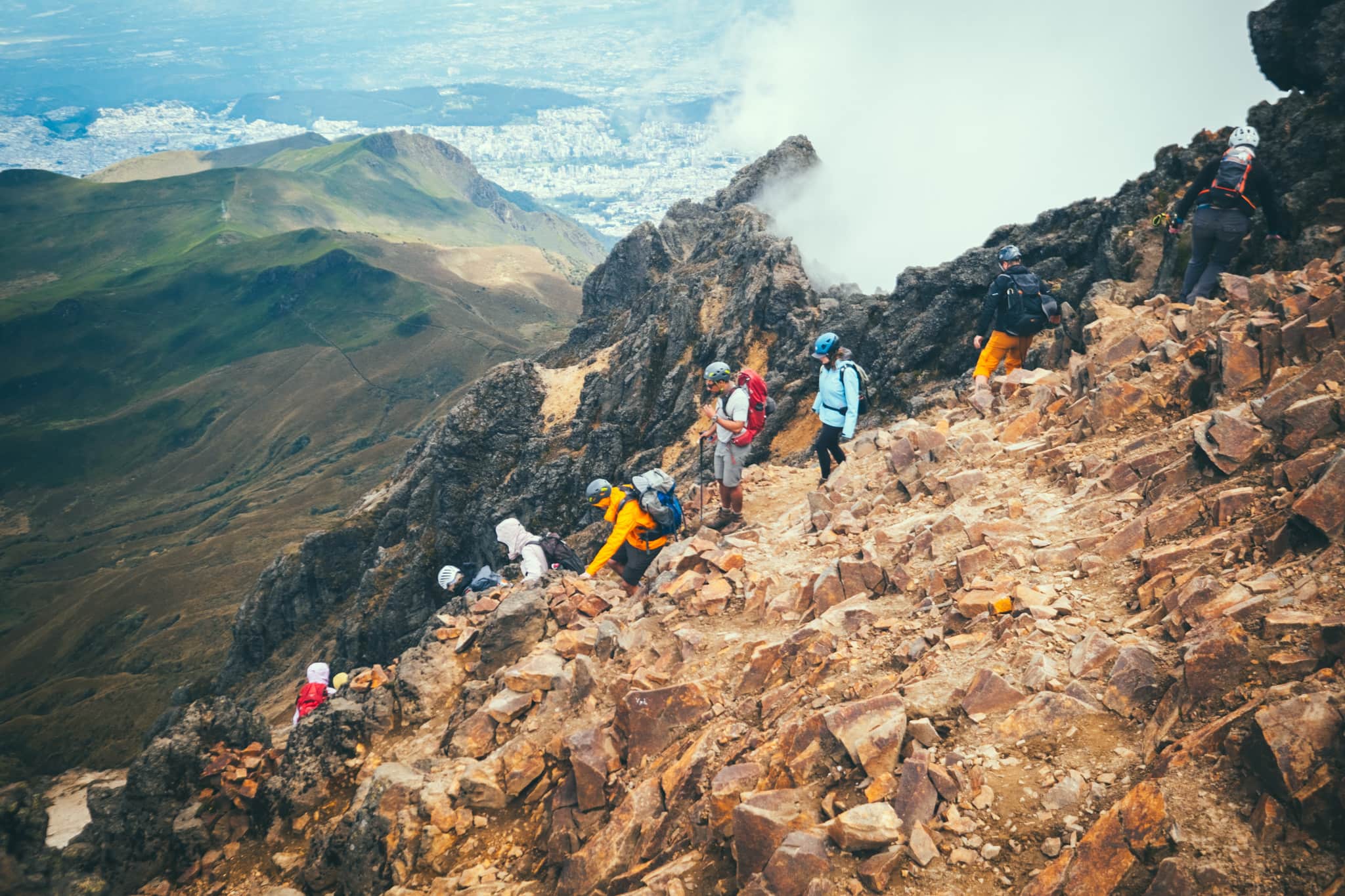
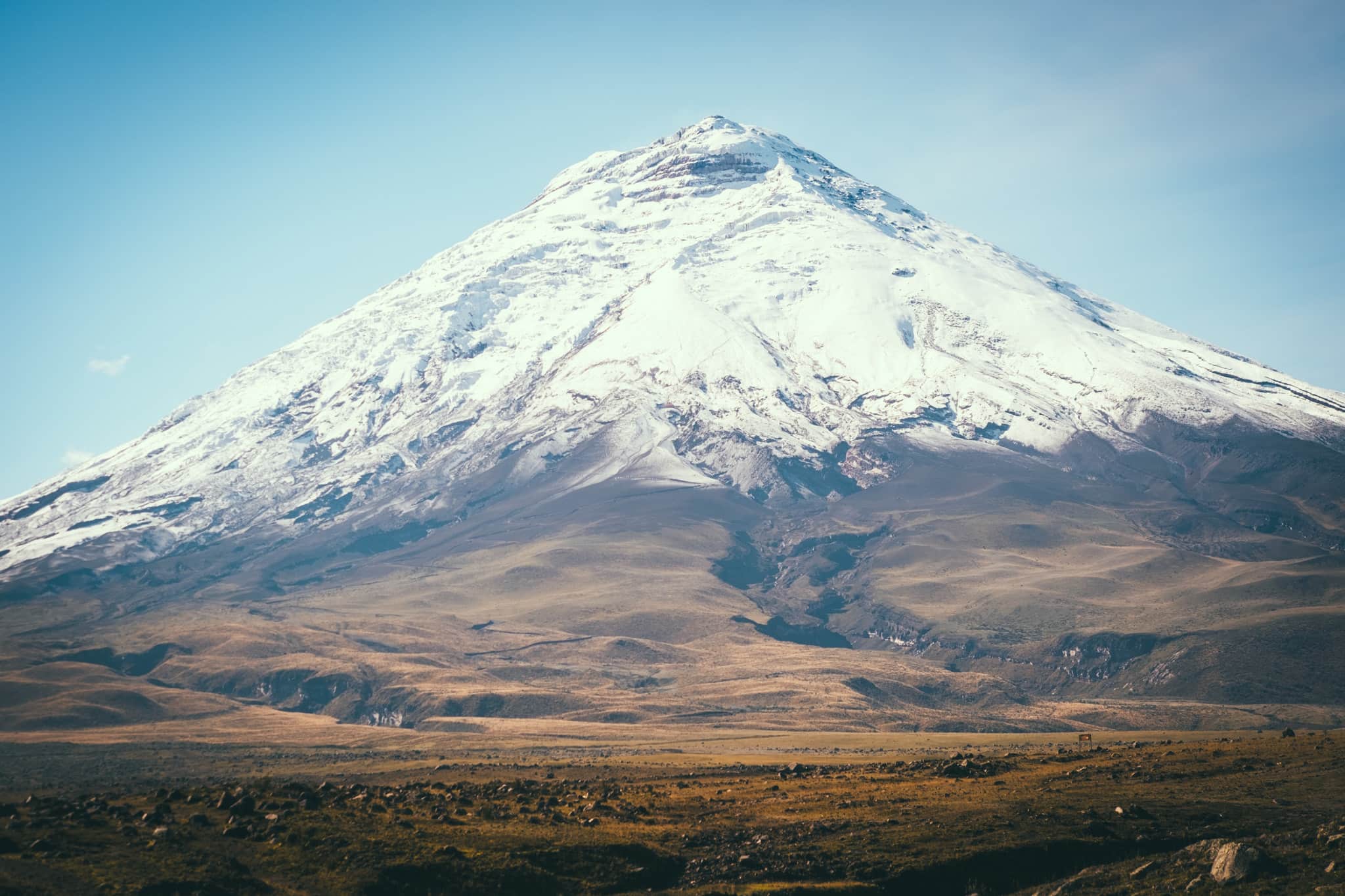

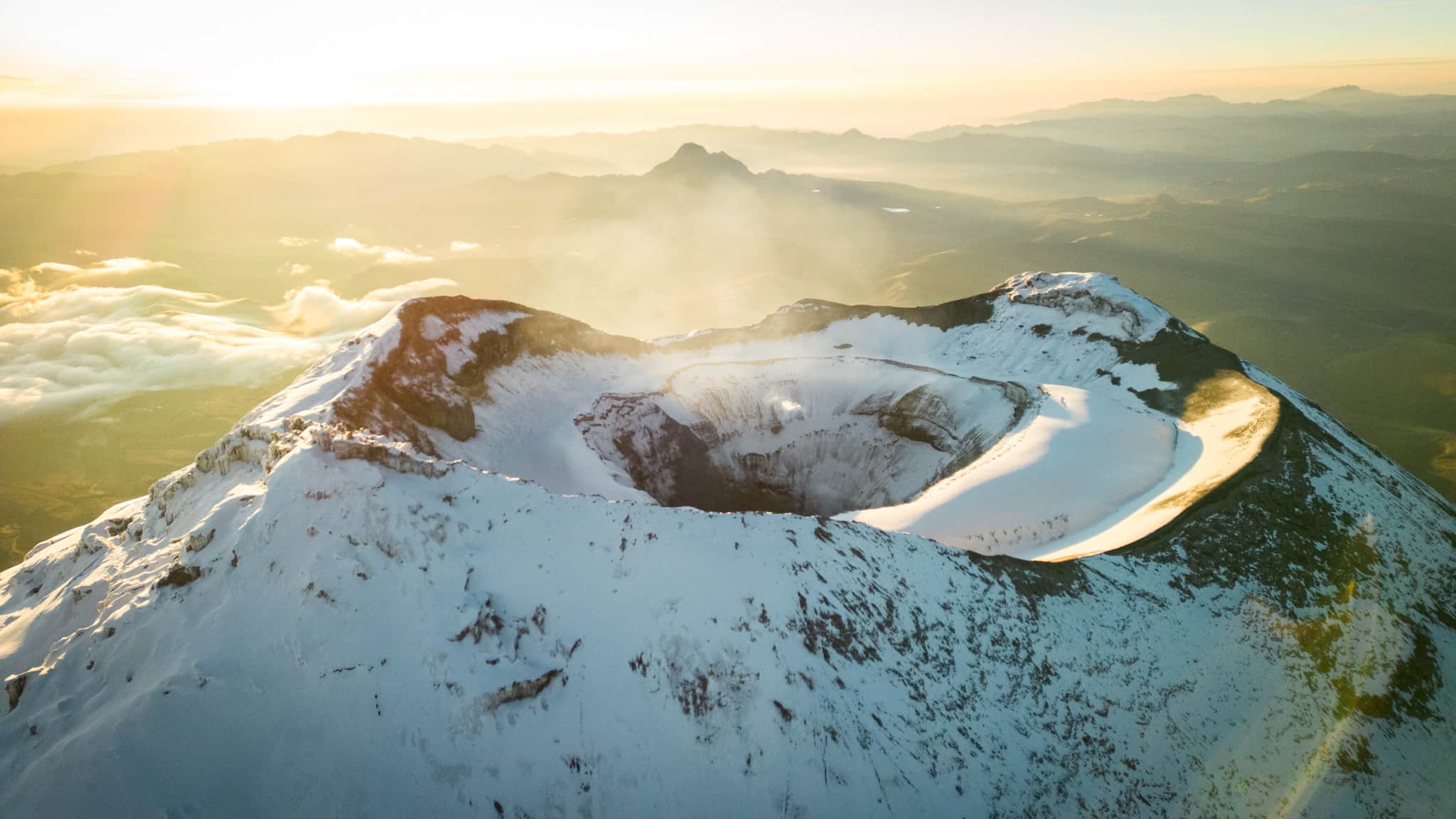


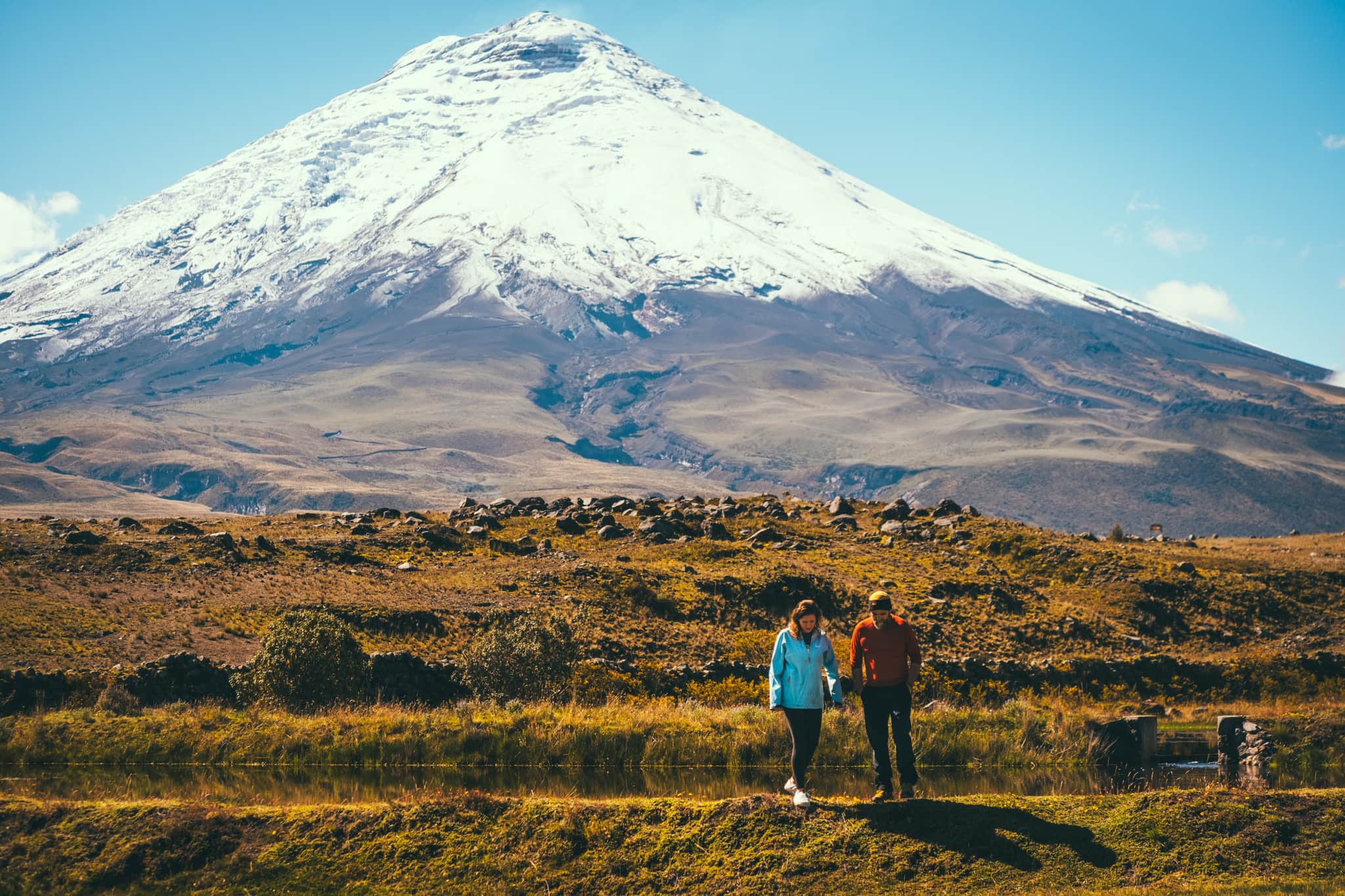
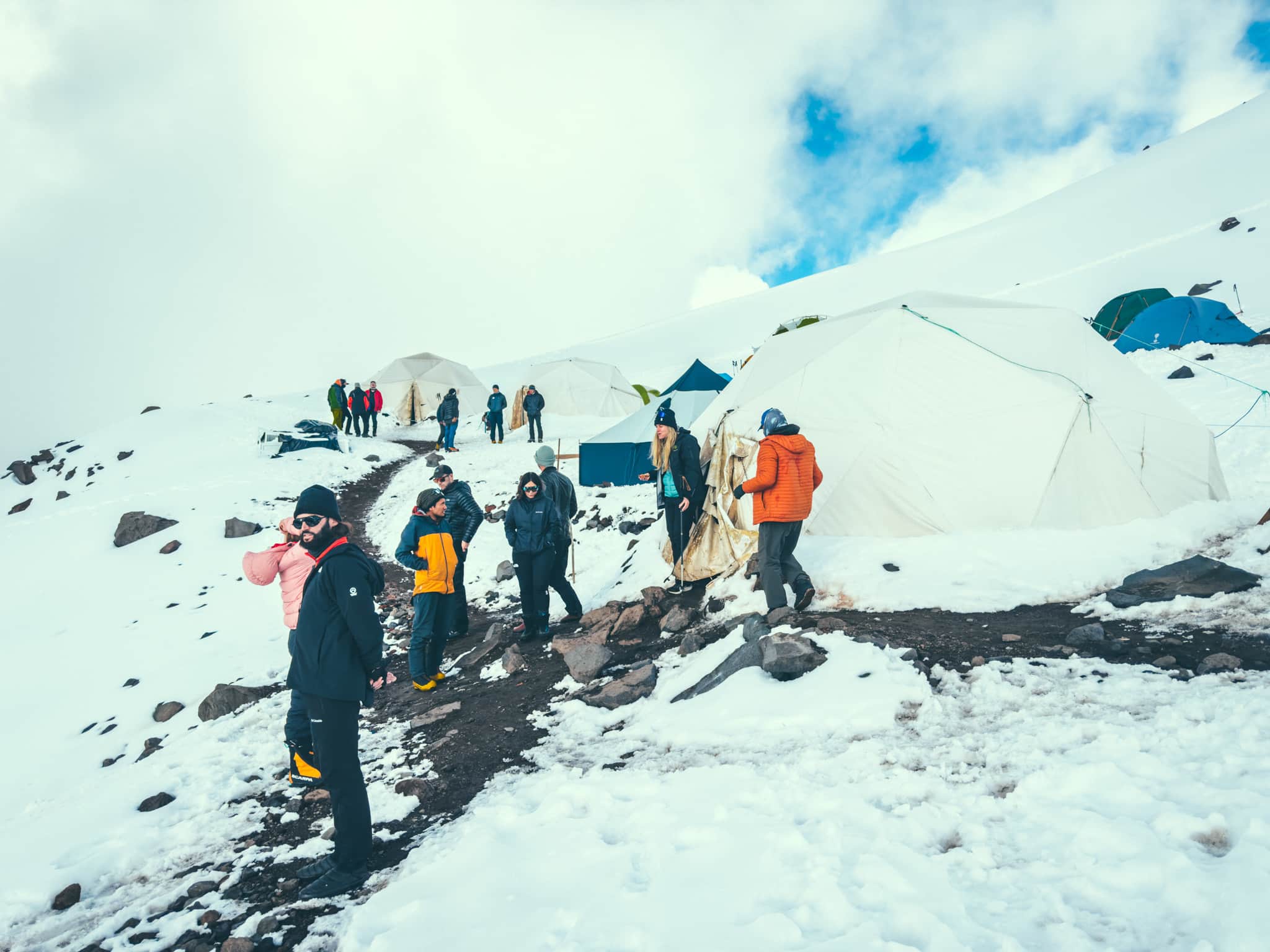
Upcoming Dates
Dates | Places | Deposit | Full |
|---|---|---|---|
| February 14th - 26th, 2026 | $600 | $3875 |
Have a question or ready to book?
Whether you’re just curious about this trip or are ready to make a deposit, we’re here for you.
To submit an inquiry or make a trip deposit, please fill out and submit the form below.
Your Trip Leader
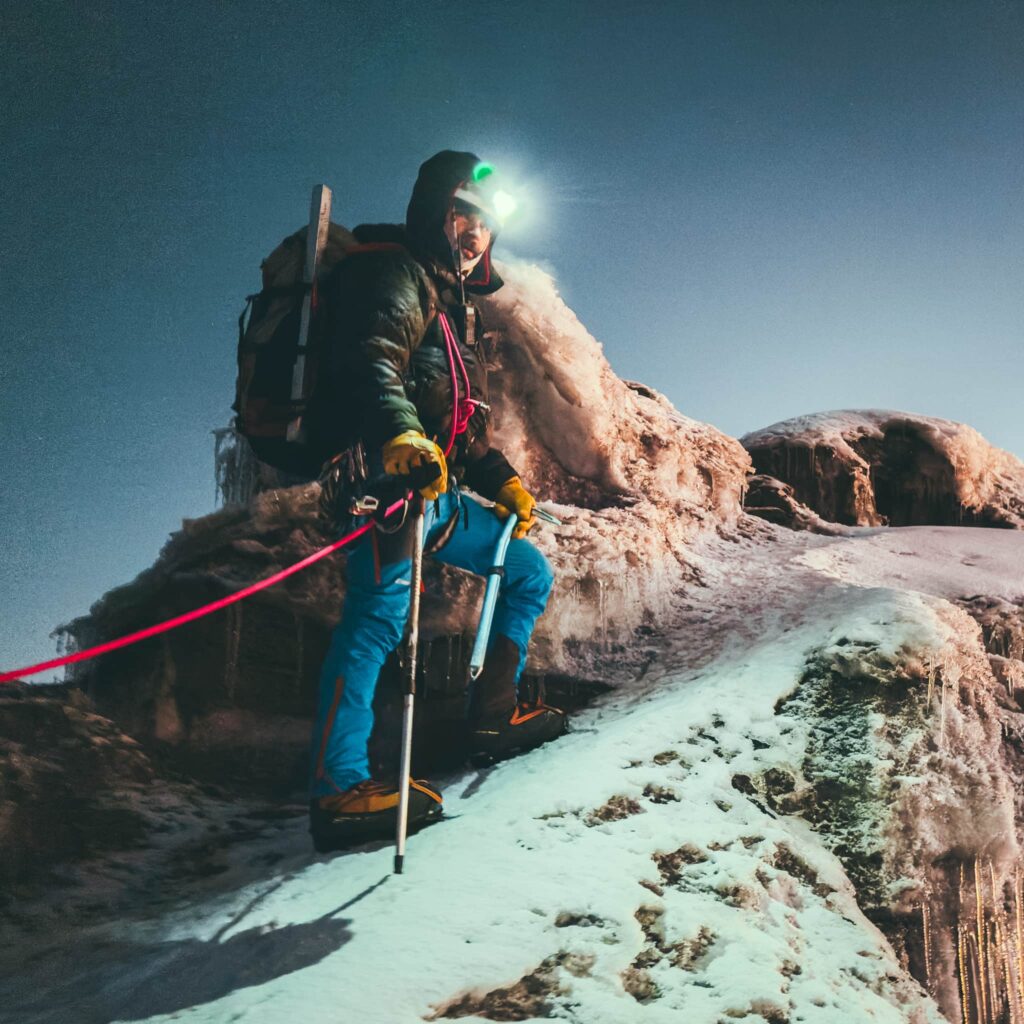
Gustavo Cevallos
As a native of Chile and resident of Ecuador and professional mountain guide for the last 20 years, there is not much Gustavo can’t do.
Gustavo is an IFMGA guide who regularly leads trips around the world. His specialty is in Ecuador and Chile (and soon to be Pakistan for Epic Expeditions!), where he leads multiple expeditions throughout the season every year.
He is the kind of guy that comes down from climbing Cotopaxi, only to go for a run before dinner. We are lucky to have this legend on our team.
Ecuador Volcano Climbing Tour Highlights
- Chance to climb three 5000+ meter peaks: Ilinzia Norte, Cotopaxi, and Chimborazo
- A proven itinerary that includes proper acclimatization
- Superlative Ecuadorian scenery, from mountains to rivers to valleys
- An attainable challenge for fit hikers interested in getting into mountaineering
- Urban exploration in the capital of Quito
- Comfortable lodging, even while climbing Ecuador’s volcanoes
- Ecuadorian mountain towns and hospitality
- Learn new climbing skills
- Practice your Spanish
- Trek with a fun international group of like-minded individuals
- Coffee, coffee, and more coffee
Ecuador Volcano Hiking Itinerary
Day 1: Quito Arrival + First Team Meeting + Gear Checks
Today is the day! Arrive at Quito International Airport and transfer to our comfy hotel in Quito. The team has our first group meeting and briefing as we go over the plan for the next few weeks together.
Your trip leader will conduct gear and equipment checks
Enjoy our first team welcome dinner as you connect with Epic friends old and new over a pint and fabulous local fare.
*If your schedule permits, we strongly advise that you arrive a few days early in Quito to begin acclimating to the altitude.
Accommodation: Hotel in Quito
Day 2: Cerro Pasochoa
Today we do an acclimatization hike to Cerro Pasochoa, standing at 4,200 meters (13,780 feet). The Pasochoa Wildlife Refuge, preserved since 1982, offers a glimpse into how Ecuadorean mountain landscapes were pre -Spanish times. As we trek through the forest below Cerro Pasochoa, we’ll encounter various tree species such as pumamaqui, polyapis, podocarpus, and sandalwood. Remember how we said Ecuador is diverse? Keep an eye out for the abundant native birds, with over a hundred species in this area.
Accommodation: Hotel in Quito
Day 3: Rucu Pichincha
Our final acclimatization hike takes us to Rucu Pichincha (4,784m/15,696ft), located to the east of Quito in the Pichincha Massif. We’ll begin by taking an epic cable car ride (if available) above the city, followed by a hike on trails through rolling hills, with a few rock scrambles along the way. From the summit, we’ll enjoy panoramic views of the Central Valley, offering a unique perspective of Quito from above.
Later in the afternoon, we’ll journey to a comfortable hotel in Otavalo (Cayambe region).
Accommodation: Hotel in Otavalo
Day 4: Ilinzia Norte Hut
The Illinizas are a pair of volcanic mountains located south of Quito, in the Illinizas Ecological Reserve. The peaks are among the highest in Ecuador, with Illiniza Sur standing slightly taller than Illiniza Norte, at 5248 meters and 5126 meters respectively. The Illiniza Norte requires a little bit of rock climbing expertise in the last approach to the summit, while the rest of the mountain may be climbed as a trekking peak.
We leave the hotel in Quito before lunch and drive for 2 hours to the base of Ilinizas at 3800 meters. We then walk for 2.5 to 3 hours to the hut located at 4700 meters. We’ll walk thru paramo and sand terrain.
Sleeping at this altitude will give us a great acclimatization for Cotopaxi and Chimborazo.
Hike duration: 2.5 – 3 hours
Distance: 5 km; 900 meters+
Accommodation: mountain hut
Day 5: Iliniza Norte Summit
We do an early start leaving the hut at around 6am, to be at the summit of Iliniza Norte at around 8am. We will walk on rock terrain from the hut to the summit. We’ll have beautiful views of Iliniza South, Cotopaxi and Chimborazo.
After summiting we will descend back to the Ilinizas base where the bus will be waiting for us. On the way back we don’t go back to the hut.
Hike duration: 4-5 hours
Distance: 6 km; 1320 meters –
Day 6: Travel to Cotopaxi region
Today we shall have a bit of rest with no planned hiking.
We depart from Ilyaku and head towards the Cotopaxi region, staying at one of the fine haciendas or lodges situated on the north side of Cotopaxi National Park in Tambopaxi.
We take this opportunity to reflect on our team’s performance during our climb of Cayambe and to strategize for the upcoming ascent of Cotopaxi. While it’s a well-deserved day of rest, you’ll also have the chance to take a leisurely walk and soak in the views of the area.
*Note in case of closure of Cotopaxi National Park, we will climb Antisana (5,753 meters/18,875 ft) instead.
Accommodation: Hacienda Guesthouse
Day 7: Hike to Cotopaxi Hut
The morning kicks off with our journey through the “Valley of Volcanoes,” heading east towards Cotopaxi. Along the way, we’ll be greeted by the majestic summits of Ruminahui, Sincholagua, and Quilindana, standing tall in Cotopaxi National Park.
As we ascend to approximately 4,600 meters (15,100 feet), keep an eye out for sightings of wild horses, llamas, and condors.
Our destination is the José Ribas Hut, nestled on Cotopaxi’s flank at 4,794 meters (15,729 feet), accessible after a forty-five-minute climb with our full packs.
Accommodation: Mountain Hut
Day 8: Summit Cotopaxi
Summit day #2!
We’ll depart from the hut well before dawn to take advantage of the good snow conditions. Our journey begins on non-glaciated slopes, gradually transitioning to uniform snow and ice ramps with inclines ranging between 30 and 35 degrees. As dawn breaks, we’re greeted by sweeping views of Antisana, towering to the north at 5,704 meters (18,714 feet). Negotiating occasional snow bridges and avoiding large crevasses, we steadily ascend towards the massive summit cone.
Approaching the base of Yanasacha, a 120-meter (400-foot) rock wall, we encounter the formidable bergschrund at the foot of the final glacial slopes leading to the summit. Progressing onto steeper ice faces, reaching up to approximately 55 degrees, we navigate through some of Ecuador’s most classic snow and ice-climbing pitches.
As the gradient becomes gentler, we finally reach the crater rim and continue along easier slopes to reach the summit of Ecuador’s second highest peak. From the top, we’re treated to incredible views of nine major equatorial peaks and the vast Amazon Basin sprawling to the east, with Cotopaxi’s impressive 300-meter (1,000-foot) deep summit crater directly beneath us.
Following our descent, we return to our hacienda in the Central Valley to feast and celebrate yet another Epic day together.
Accommodation: Hacienda Guesthouse
Day 9: Travel to Chimborazo
Time to get south again, traversing the renowned “Valley of Volcanoes” via the Pan-American Highway, passing through the towns of Latacunga and Ambato. En route, we pause for lunch before continuing our drive.
By afternoon, we ascend to the eastern slopes of Chimborazo, where we settle into a lodge situated at 3,499 meters (11,480 feet). Nestled amidst grassy plains below Chimborazo, the lodge offers a picturesque setting for us to unwind and admire the panoramic views of the Ecuadorian Altiplano, with Chimborazo and its counterpart, Carihuairazo, standing majestically in the backdrop.
Accommodation: Hacienda Guesthouse
Day 10: Chimborazo High Camp
We are on the move again! Leaving the lodge on the eastern side of Chimborazo, we drive across the volcano to its western flank, passing through the town of Riobamba.
The province of Chimborazo is characterized by its hilly terrain and a significant indigenous population. During our journey, we’ll be treated to impressive views of the Chimborazo massif, rolling Andean landscapes, and sightings of wild vicuñas and llamas. By midday, we’ll arrive at the Carrel Hut (4,800 meters/15,700 feet) for lunch.
In the afternoon, we’ll embark on a two-hour hike to the High Camp (5300 meters/17,388 feet). Climbers will carry their personal gear while porters handle water, tents, and food.
As we prepare for our midnight start, we’ll enjoy an early dinner. Despite our stoke building for the summit push ahead, we’ll prioritize rest and try to go to bed early in anticipation of a big ascent the next morning. Depending on mountain conditions, the team may opt to stay at the Whymper or Carrel huts for a direct summit attempt from there.
Accommodation: Tents
Day 11: Chimborazo Summit
It’s summit day, baby!
Starting from High Camp, we’ll trace our path along the Stübel Glacier until it merges with the Castle Saddle at 5,499 meters (18,044 feet). The journey to the Whymper summit typically spans about six – eight hours from camp. As we ascend, the technical challenges lessen, and we’ll find ourselves navigating compact and moderately angled snow for the remainder of the route.
The summit crater area sprawls expansively, usually covered either in soft snow or nieve penitentes formations. Despite being our longest day, our thorough acclimatization from previous climbs will serve us well. The round trip will take approximately 10 to 12 hours, involving traversing ice ramps, snow bridges, and sections of icefall. It’s a fun and dynamic route on an impressively grand mountain.
Following our descent to the Carrel Hut, we’ll continue by vehicle to the lower altitude and return to Rio Bamba.
Accommodation: Hacienda Guesthouse
Day 12: Return to Quito
The normal plan is to return to Quito from Rio Bamba after breakfast. In the event day 13 is utilized as a rest day due to unfavorable weather conditions, then we will push the summit day until day 14. If we climb on Day 14, we will hike out after reaching the summit and then drive back to Quito, where we will spend the night.
Accommodation: Hotel
Day 13: Depart from Quito
Alas our Epic odyssey has come to an end. Today is departure day. If your schedule permits, we advise you to stick around in Quito for a few more days to rest and soak in the events of the last few weeks.
Standard checkout form the hotel is around 12 noon on Day 15. We can suggest additional nights’ accommodation for anyone wishing to stay in Quito.
- Double (shared) room at Hotel Quito, Casa Ilayaku, Mortiños, Abraspungo
- Shared group dormitory at Cotopaxi hut
- Chimborazo high camp services with tents, kitchen tent, cook and cooking gear
- 1 trip leader supplied by Epic Expeditions
- Bilingual (English/Spanish) certified ASEGUIM/IFMGA mountain guide for climbing days at a guide to client ratio of 1:2
- Lodging and meals for the guides and driver
- Transportation on days 2 to 12
- Entrance to Pasochoa and cable car, ticket tu Rucu
- Porters for Chimborazo high camp up and down
- Breakfast on days 2 to 13
- Box lunch or restaurant lunch on days 2 to 12
- Dinner on days 4 to 11
- Climbing permits, fees, and local taxes (entrance to the national parks)
- International airfare
- Airport pick up and drop off
- All dinners in Quito on days 1, 2, 3, 12
- Extra drinks with dinner
- Alcoholic and bottled beverages
- Travel insurance with trip cancellation, medical and evacuation policy
- All expenses associated with change of schedule of non-scheduled departure
- Personal climbing gear and clothing (we can assist with the rental)
- Tips for staff (estimated +300 USD)
- Personal expenses (phone calls, laundry, room service, extra hotel nights, extra meals, etc)
What People Have to Say
Ecuador Trip FAQ
This is a great place to pick up mountaineering if you haven’t already done so. Climbing Ecuador’s volcanoes is relatively straightforward compared to other high-altitude, technical climbs found in regions like the Peruvian Andes, Karakoram, and Himalayas. There will be challenges, but nothing that a strong hiker with the proper support, equipment, and guidance can’t handle.
So long story short: you do not need any technical climbing experience to come mountain climbing in Ecuador with us. Only an affinity for the mountains, great fitness, and a good attitude.
Despite recent political upheavals, Ecuador is generally safe for tourists, including climbers. The majority of the time spent in Ecuador will be outside of urban areas, where crime and unrest are more common.
However, as with any travel destination, it’s essential to take normal precautions to ensure your safety. This includes staying aware of your surroundings, avoiding risky areas, and following any specific instructions provided by your guide and local authorities. This applies not only in the cities, but when we are in the wilds climbing the volcanoes of Ecuador as well.
Joining a climbing tour in Ecuador offers a unique experience compared to other locations around the world due to its diverse range of terrain and ecosystems. As we’ve already mentioned, the opportunity to summit so many high-altitude volcanoes is a rare gift.
Ecuador’s proximity to the equator also means that climbers can experience both tropical and alpine climates during their expeditions. Despite being mostly a tropical nation, you can also find snow 365 days a year in the Andes, not to mention some of the most impressive glaciers outside of the polar regions.
We will be staying in a mix of 3-star hotels, Hacienda-style guesthouses, and mountain huts during the climb plus a few nights in tents when we attempt Chimborazo. In Quito, we will be staying within walking distance of many shops, restaurants, and bars. A nice breakfast is included at every hotel stay. Hotels have been carefully selected to ensure we get a good night’s rest at every stop on our journey!
For Cotopaxi, we will be staying at a beautifully located basic, but comfortable mountain huts located along the climbing route and will be launching our summit attempts directly from the hut. For Chimborazo, we stay at one high camp, the night before our summit push.
Single Supplement hotel room (9 nights): $600 USD
You are not required to carry your full bag with all your gear for any large distances while hiking or climbing on this volcano tour of Ecuador. Most of the time, our gear is transported via jeep directly to that nights’ accommodation.
Porters will present on the ascent to Chimborazo High Camp and guests will only have to carry personal gear in a daypack on this day.
Connectivity and WiFi availability can vary depending on the location of the climb. While major cities and towns in Ecuador typically have reliable internet access, remote mountainous areas may have limited or no connectivity.
That being said, getting cell reception while at one of the high camps is not unheard of.
As we always recommend on any Epic trip, this is a good time to unplug and take a digital detox. It will help you focus on the task at hand (hiking to and climbing Ecuador’s volcanoes) and keep a clear head.
The following meals are included in the trip price:
- Breakfast on days 2 to 15
- Box lunch or restaurant lunch on days 2 to 14
- Dinner on days 4 to 13
Dinners in Quito are paid on your own (cost is approximately $13-20 USD per person depending on what you order).
Trip participants need to be in good shape and capable of trekking over mixed terrain for long distances (maximum 8 hours). On average our trekking days are 5 hours per day. Local porters will be present in some cases to help us carry the supplies that will make climbing Ecuador’s volcanoes a comfortable and rewarding experience.
The biggest day will be Chimborazo summit day; when the climb will take between 10-12 hours depending on conditions and your fitness level from high camp to summit and back to high camp. So you will be saving some energy for this day for sure!
For more information, please refer to our trekking fitness guide.
Ecuador's Volcanoes - Abridged
Ecuador’s volcanoes tell a story millions of years in the making. Straddling the Pacific Ring of Fire, the country’s highlands were born from the tectonic collision between the Nazca and South American plates—an ongoing geologic drama that continues to shape its dramatic peaks and deep Andean valleys. These towering volcanoes are not just landmarks but testaments to the immense forces beneath the Earth’s crust, responsible for some of the youngest and most active stratovolcanoes on the continent.
Cotopaxi, one of the world’s highest active volcanoes, has erupted more than 50 times since written records began. Long before modern instruments tracked its activity, Indigenous communities observed its rhythms and wove them into spiritual and agricultural traditions. European explorers first documented Cotopaxi in the 18th century, and by the mid-19th century, climbers like Wilhelm Reiss and Angel Escobar made pioneering ascents—ushering in a new era of climbing expeditions in Ecuador. Today, despite its frequent rumblings, Cotopaxi remains one of the most popular peaks in the Andes, offering both beauty and challenge atop its 5,897-meter summit.
Chimborazo, Ecuador’s tallest volcano at 6,263 meters, is geologically dormant but culturally and scientifically iconic. In 1802, Alexander von Humboldt attempted to climb Chimborazo, reaching higher than anyone had at the time and helping lay the groundwork for modern high-altitude science. Its summit, due to the Earth’s equatorial bulge, is the farthest point from the planet’s center—giving it a mythic status among mountaineers. Modern climbers may still follow Humboldt’s footsteps, navigating glaciated ridges and confronting harsh alpine conditions along the way.




